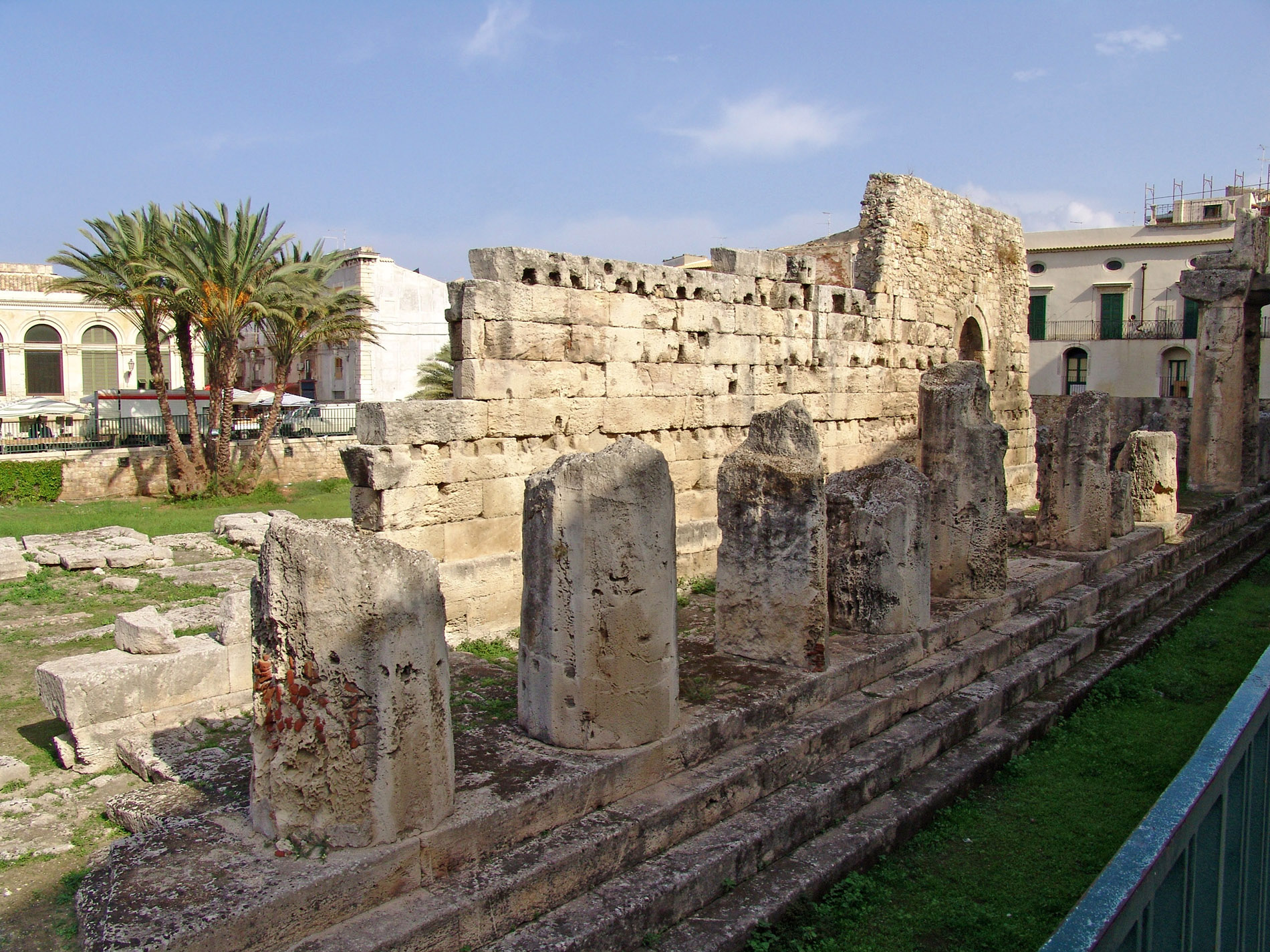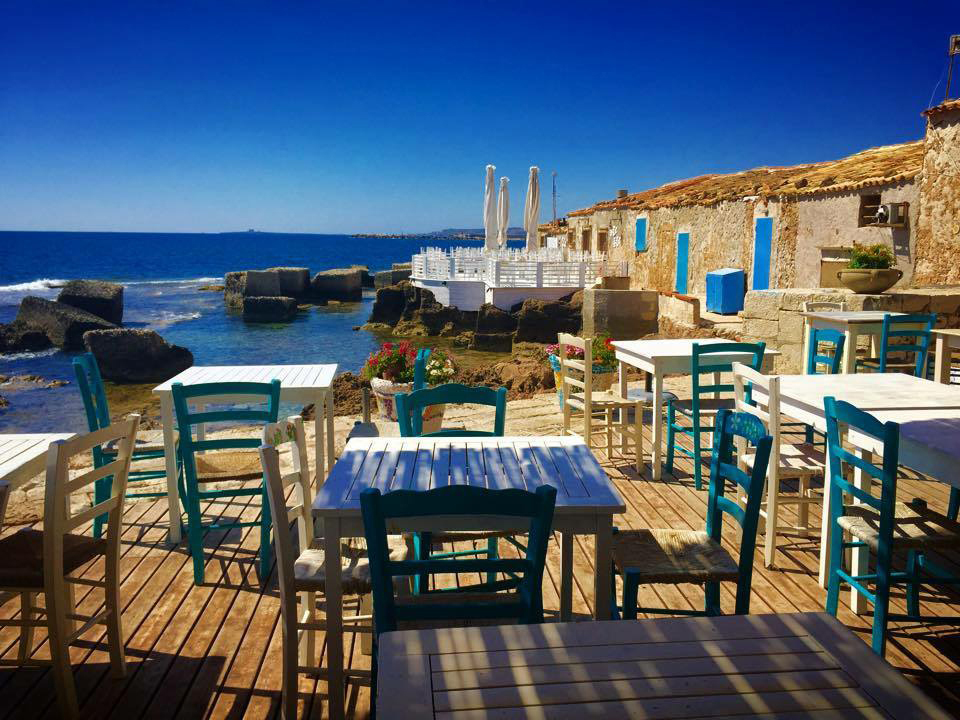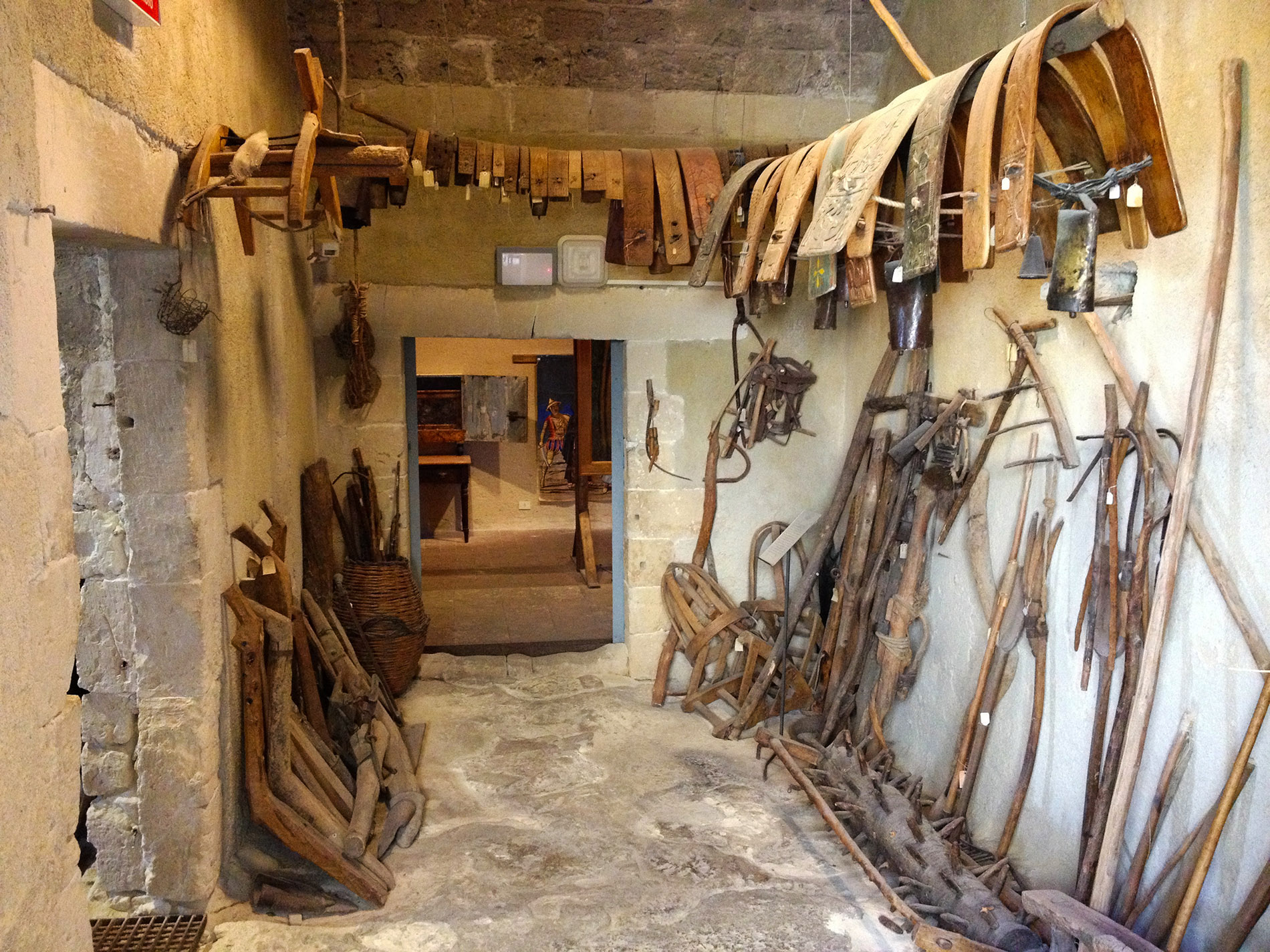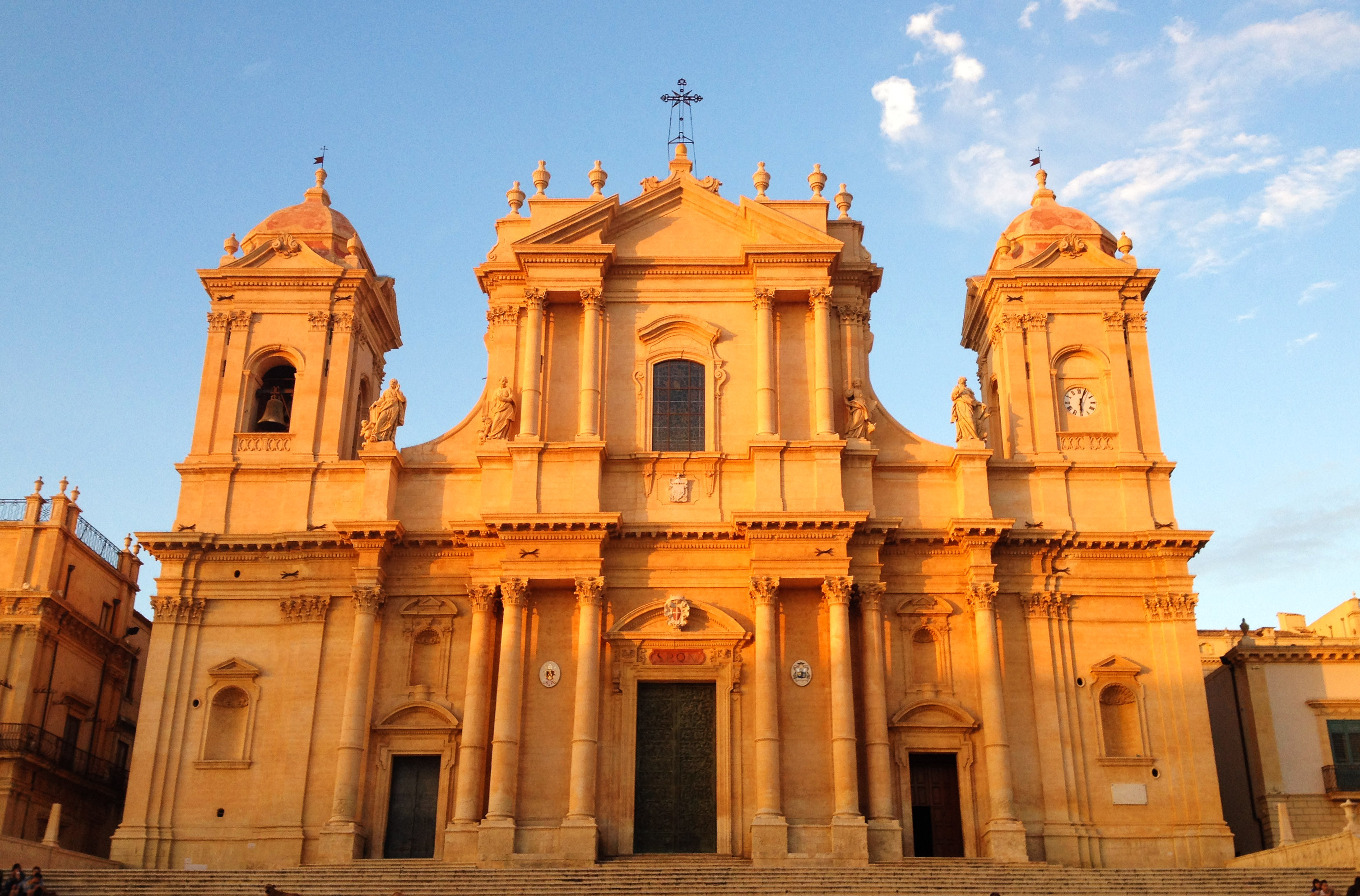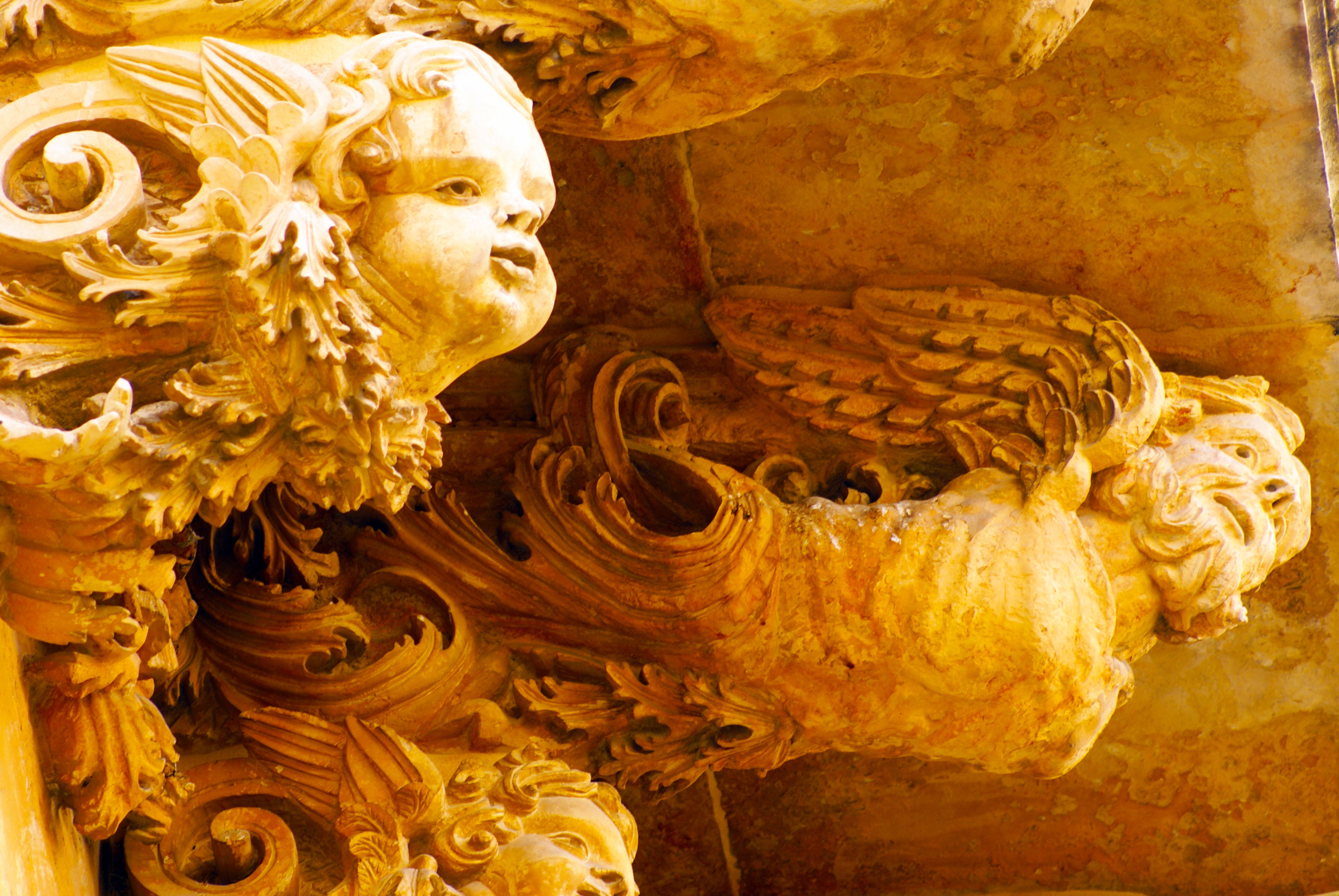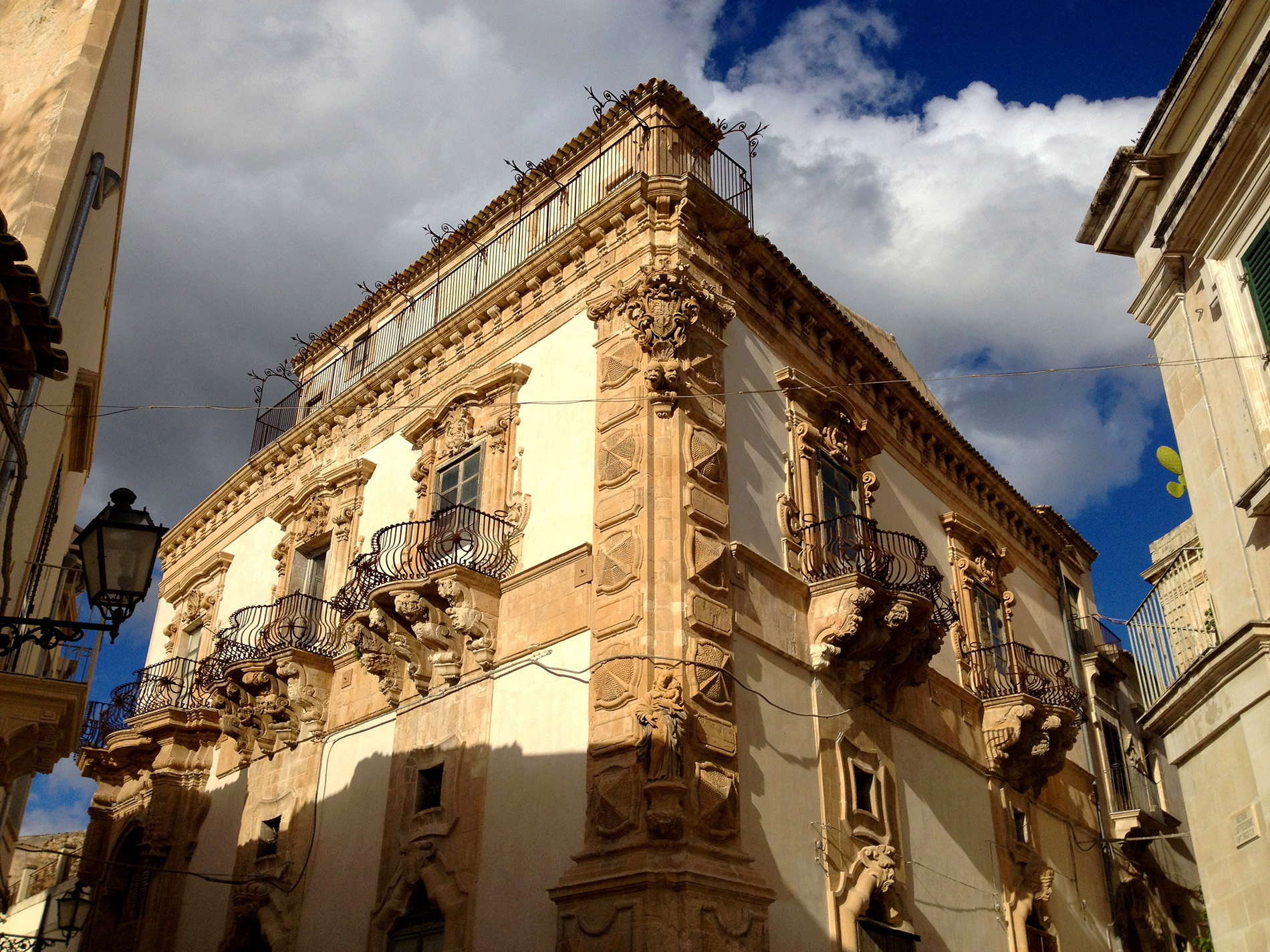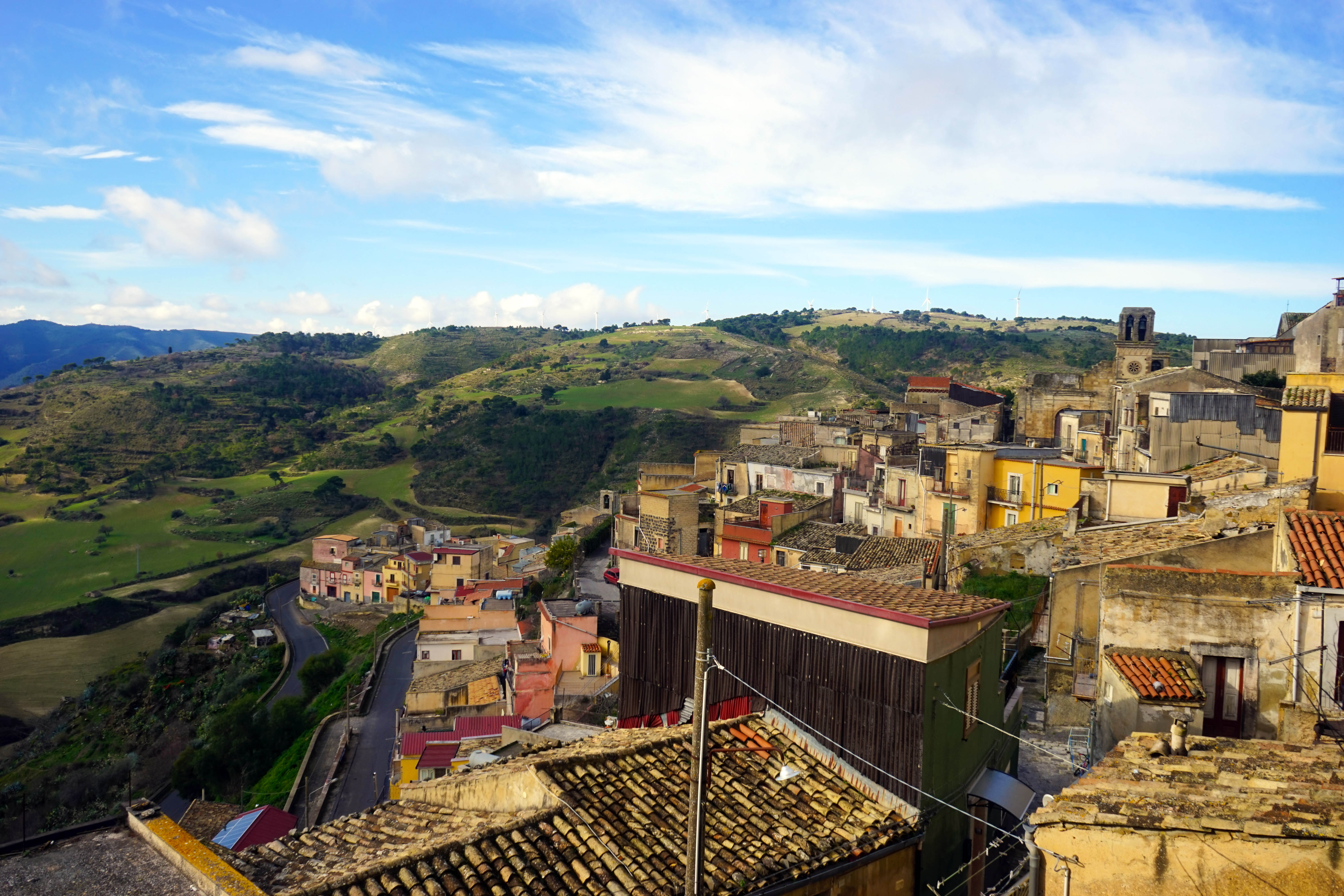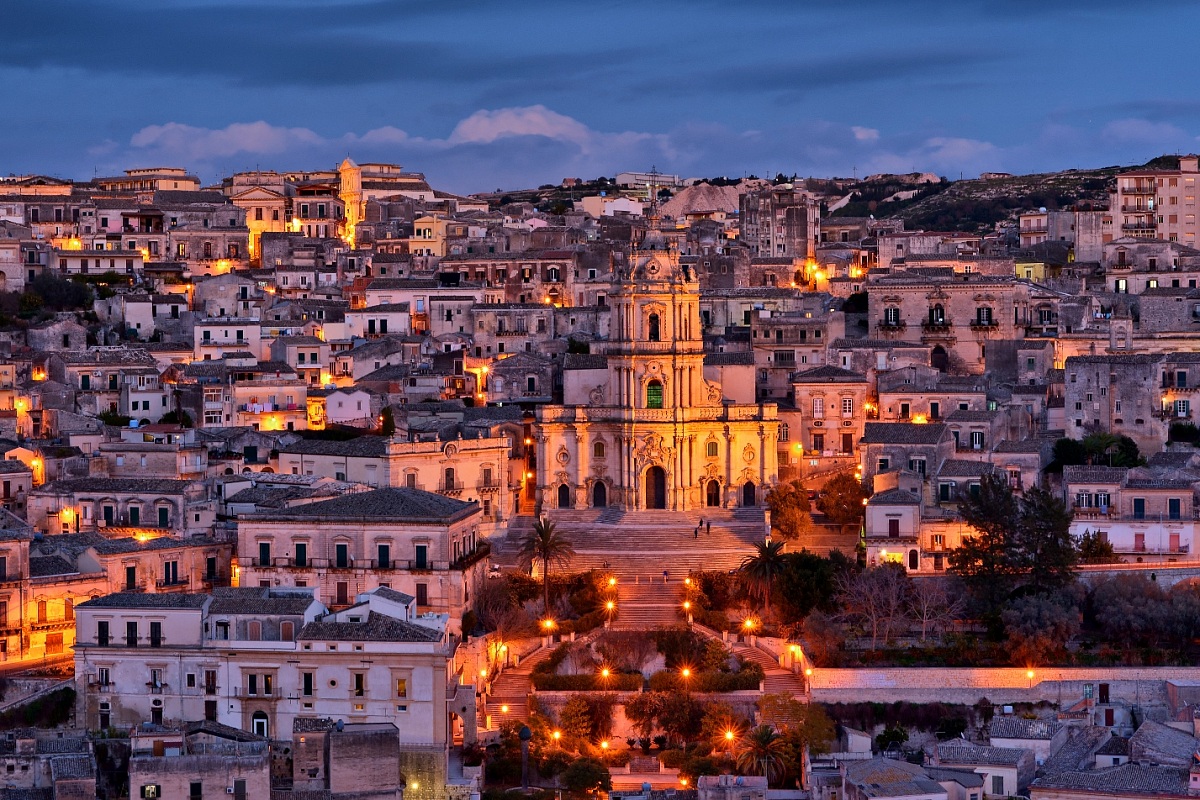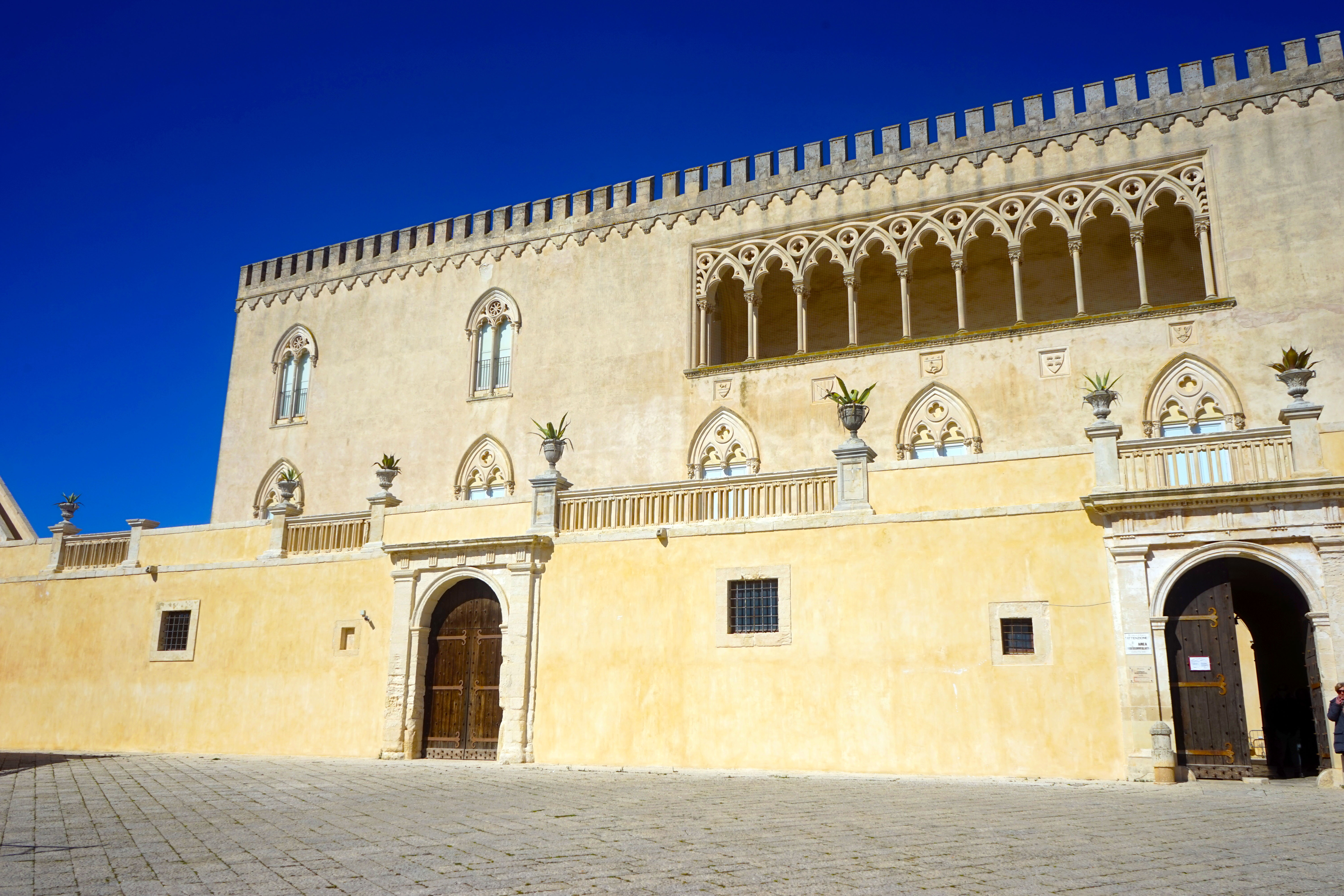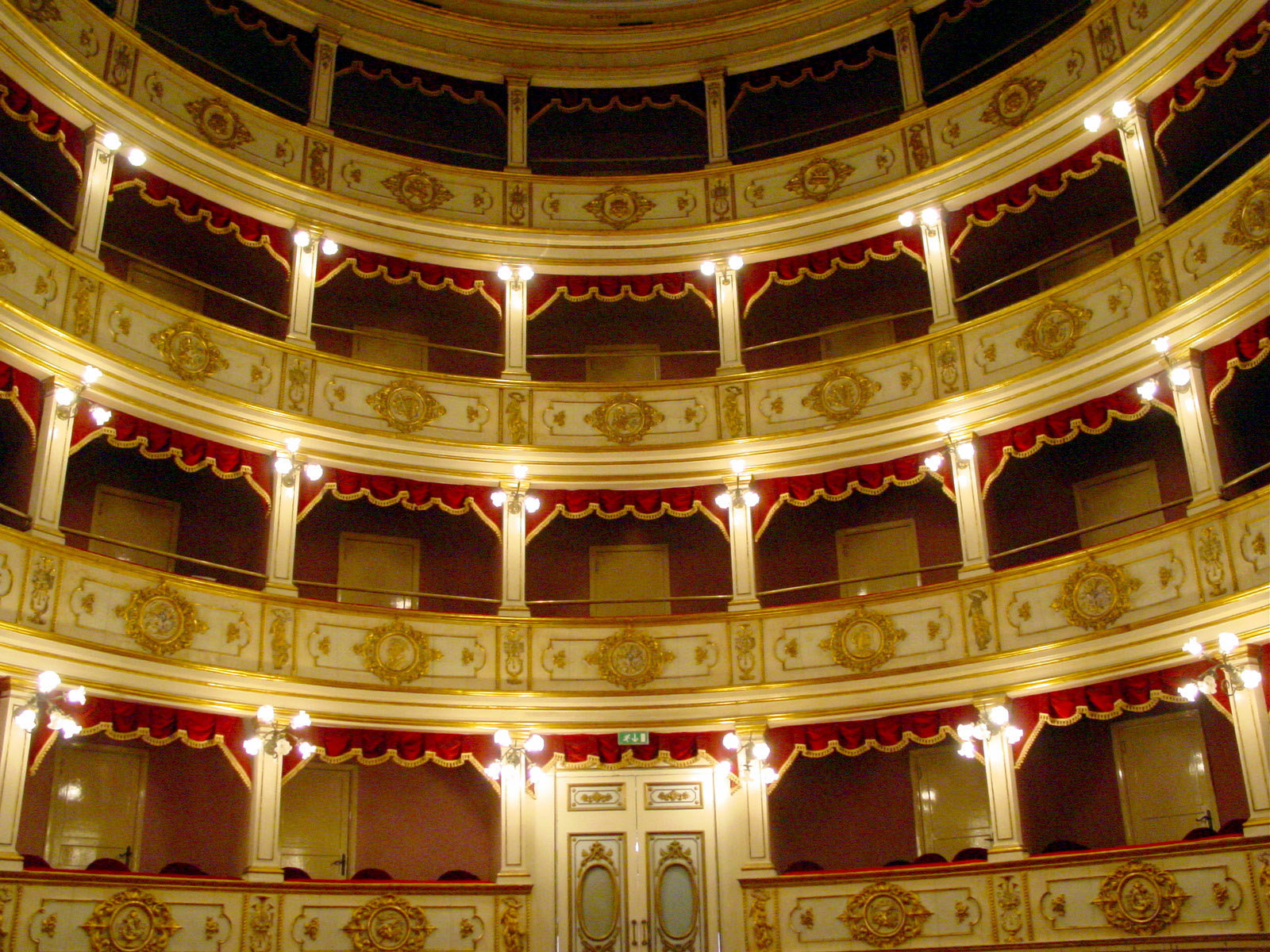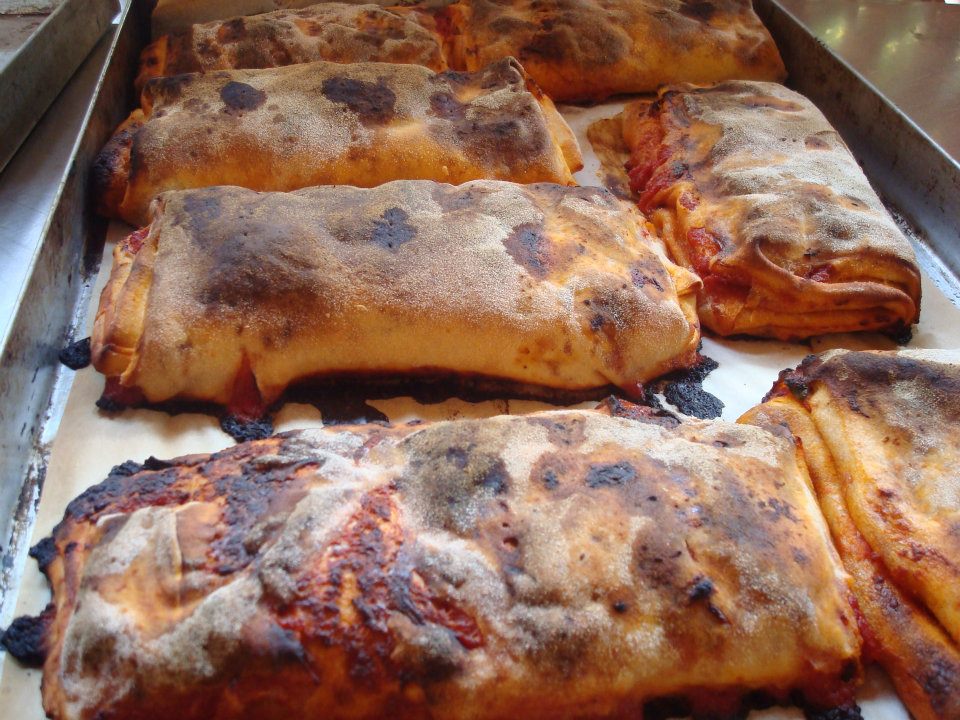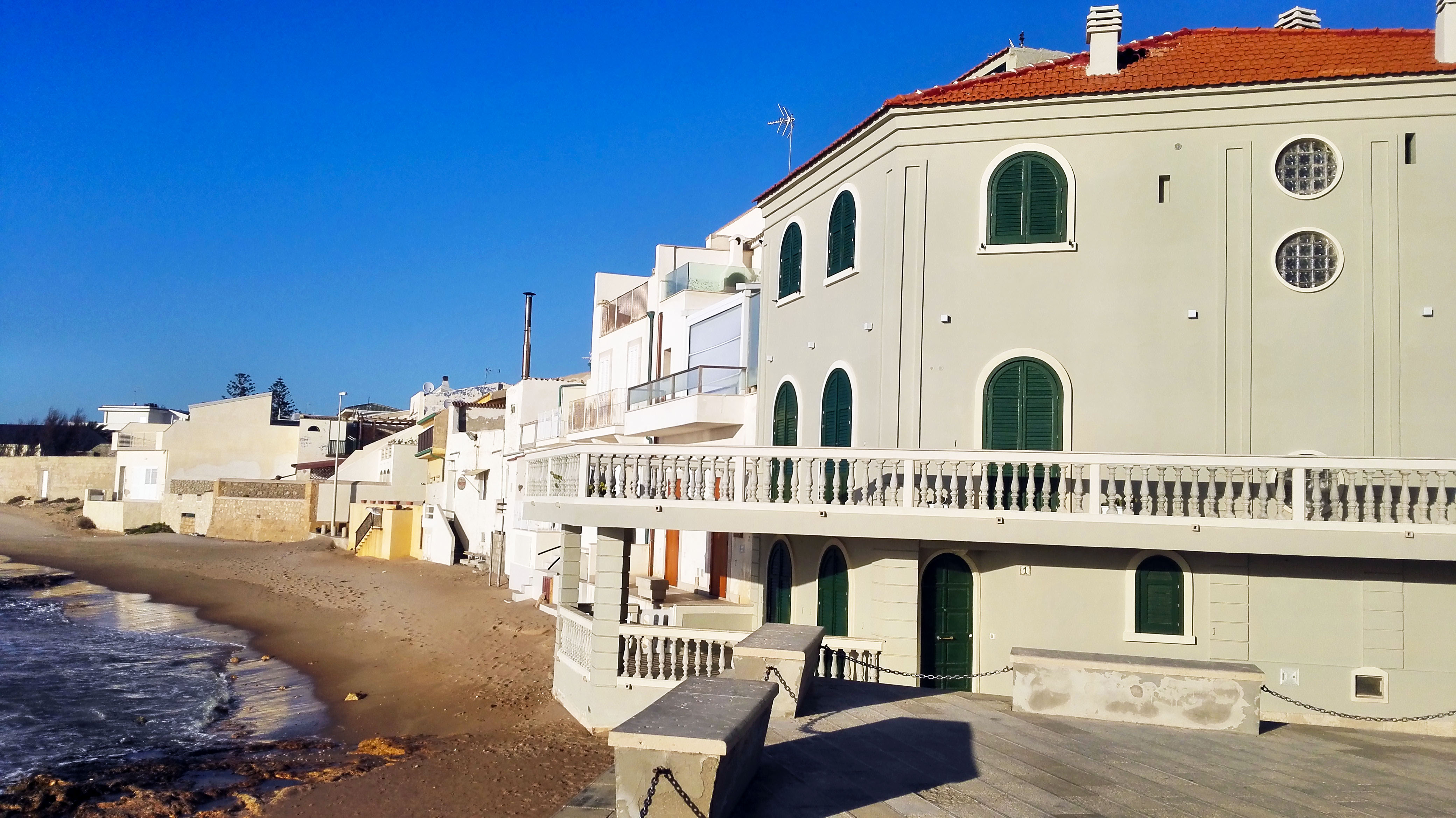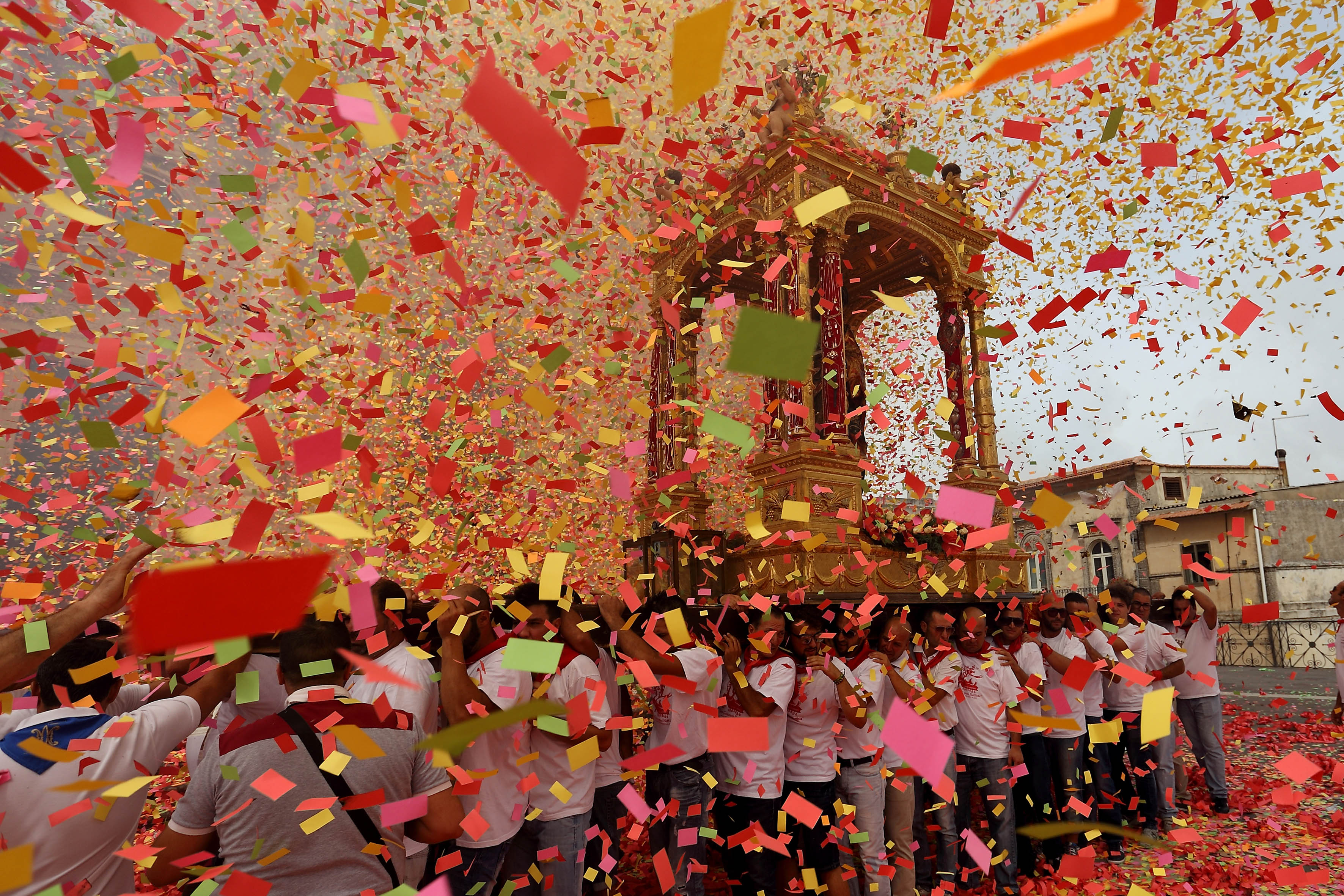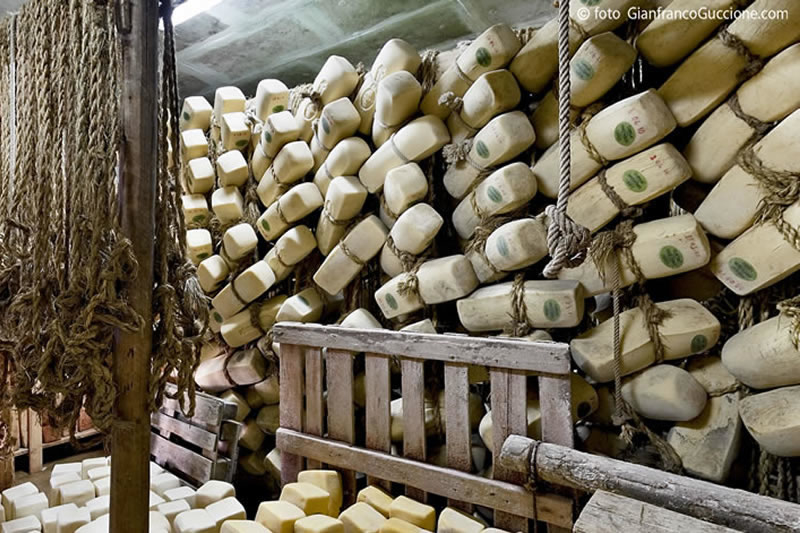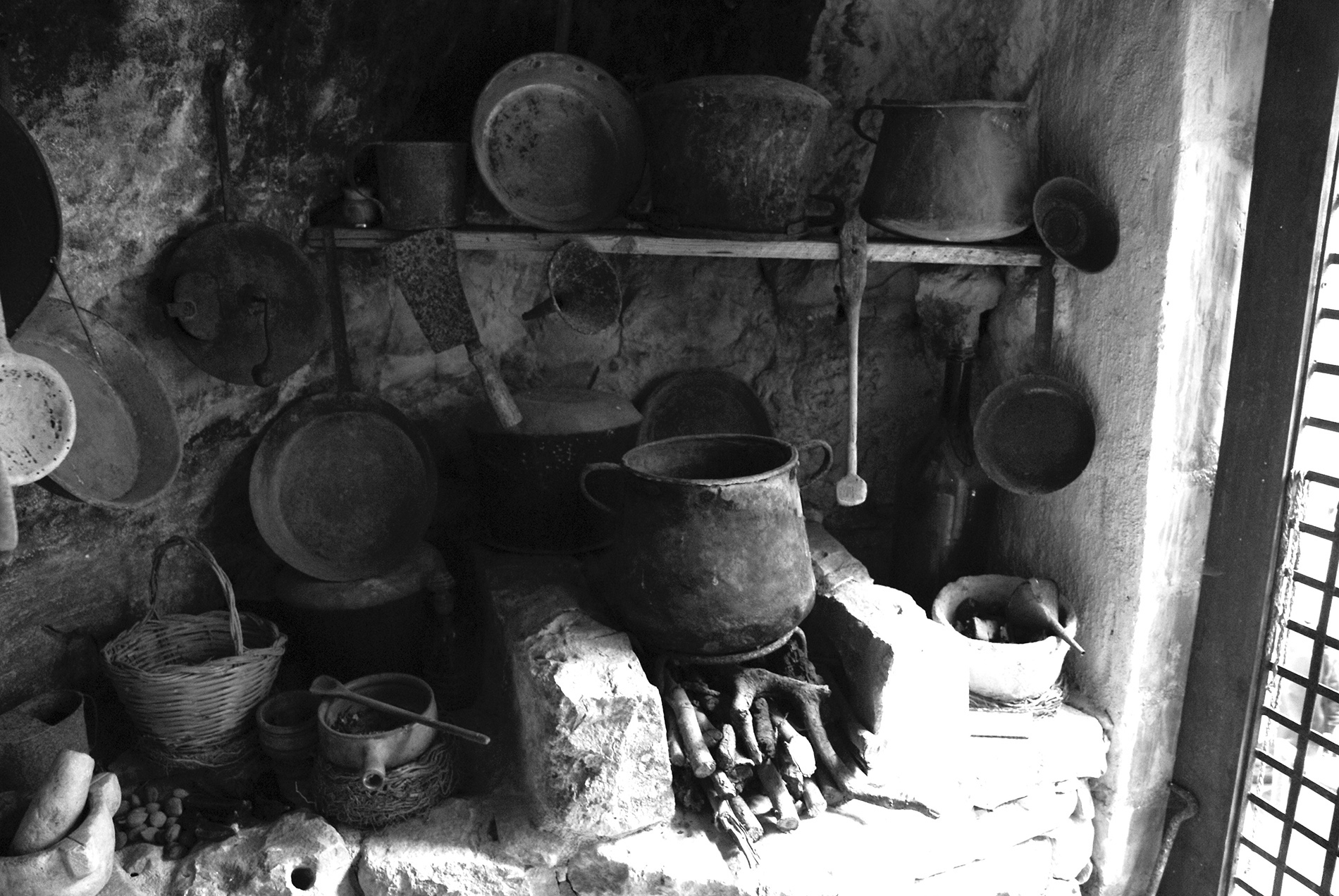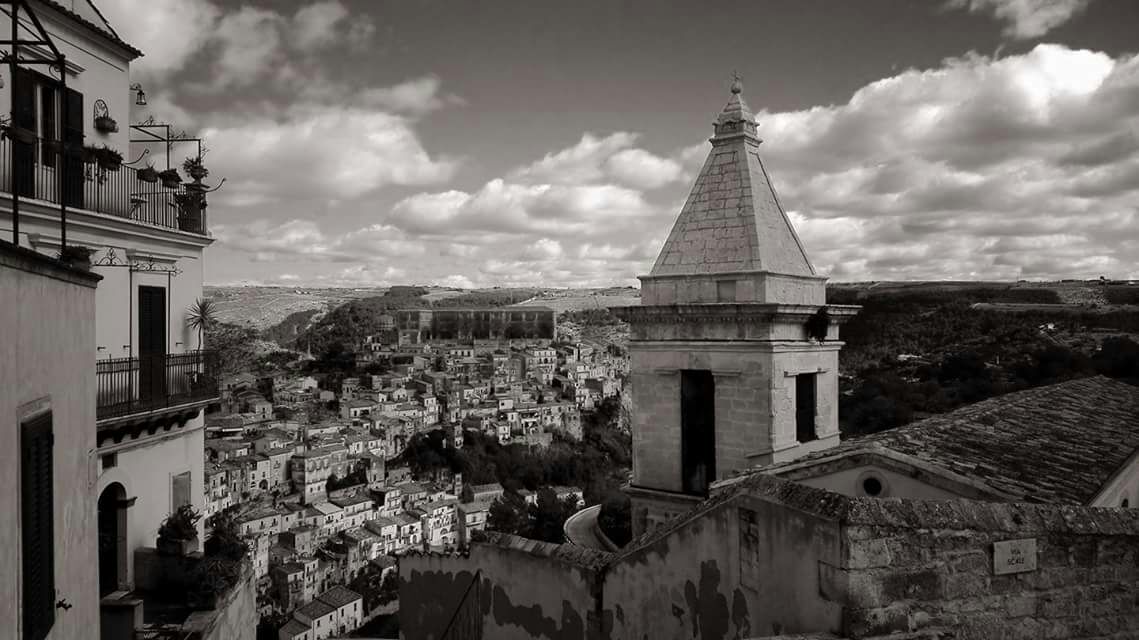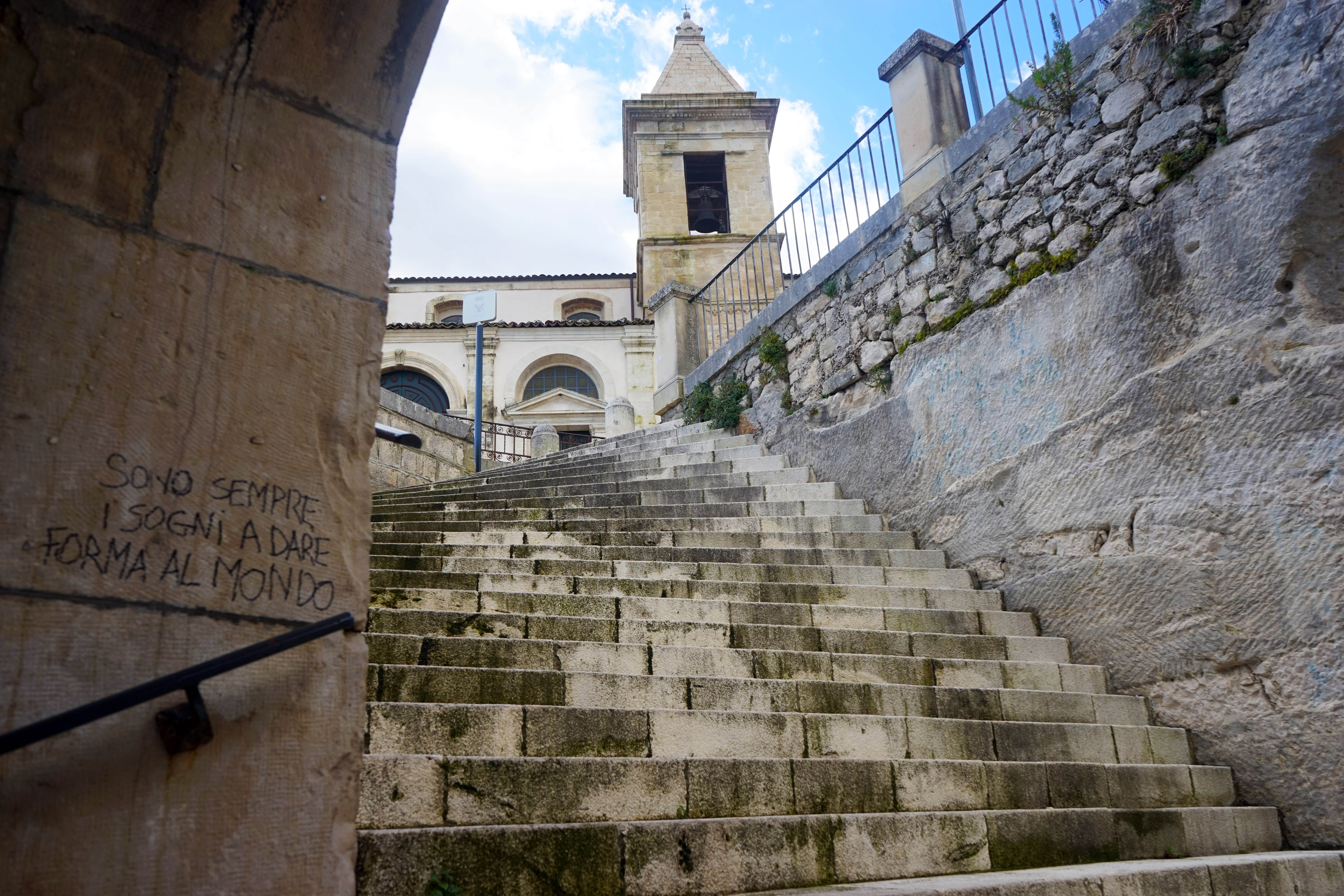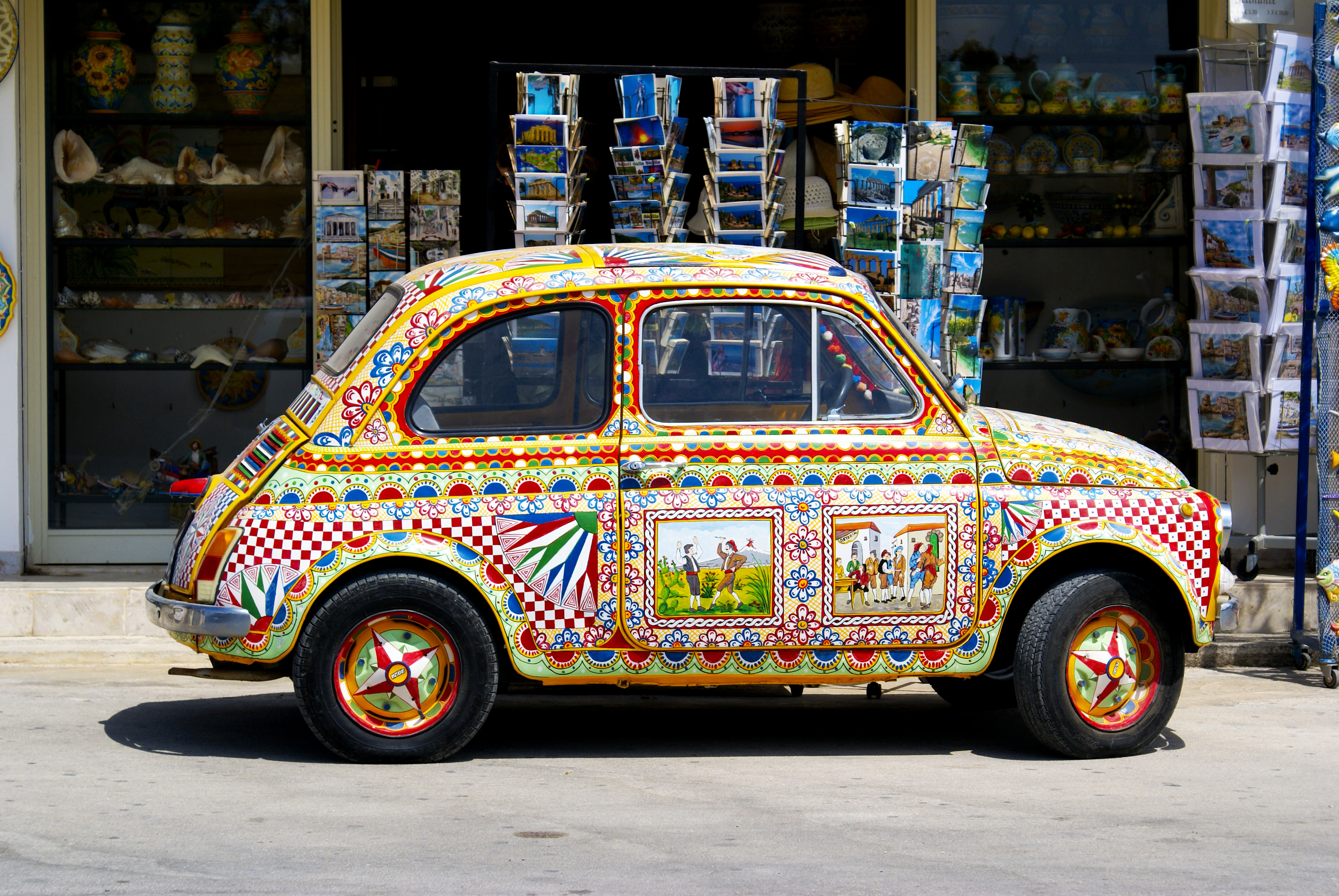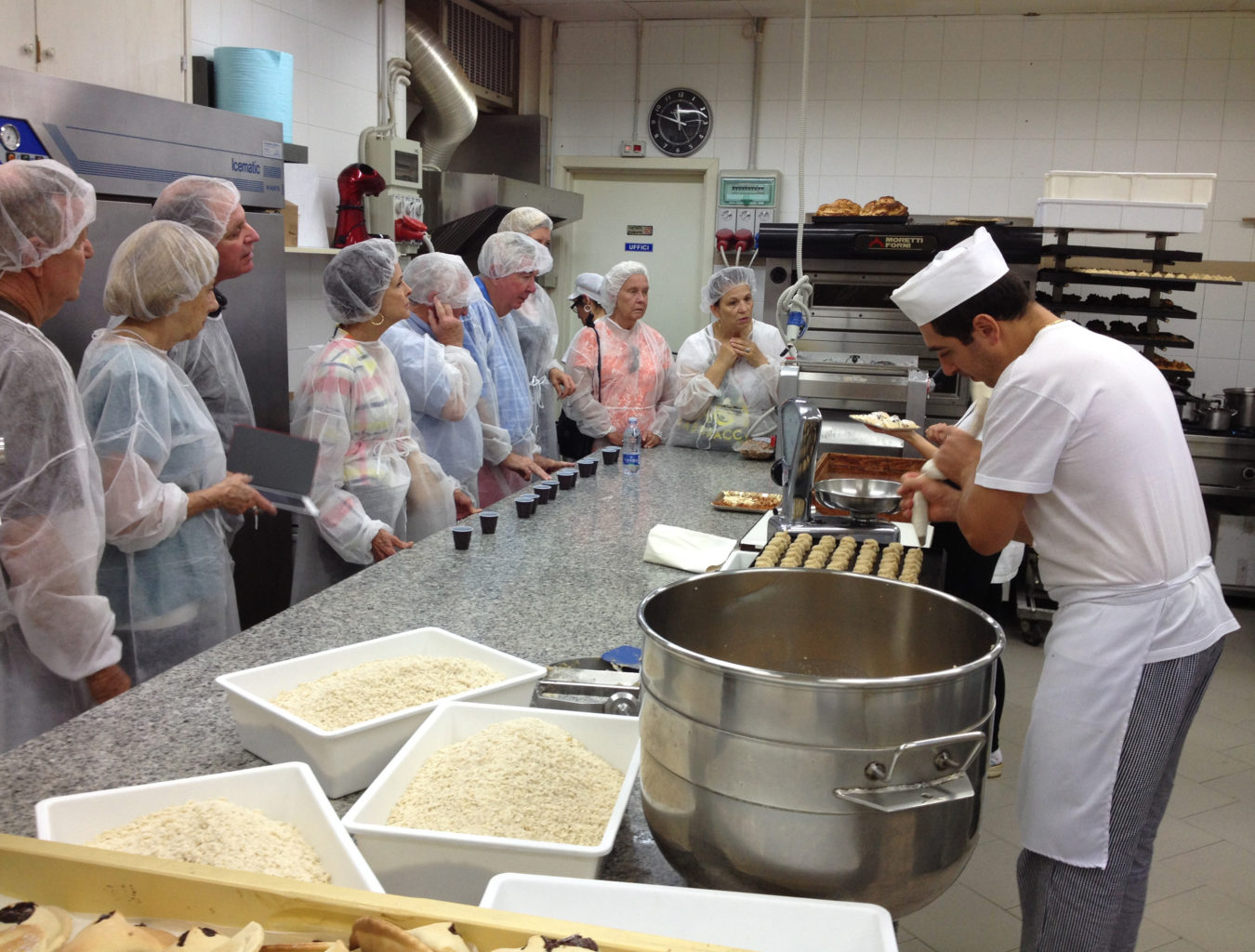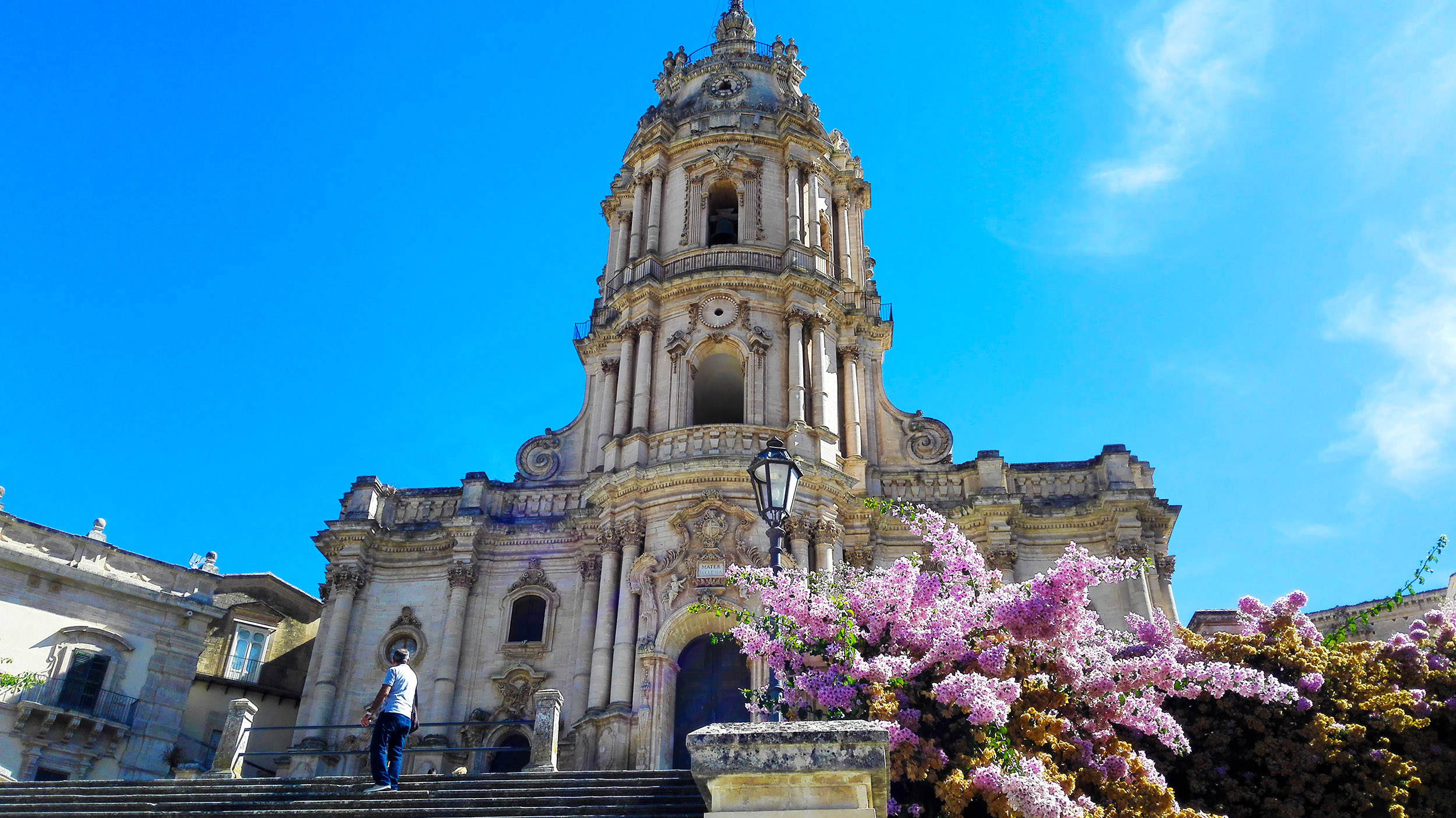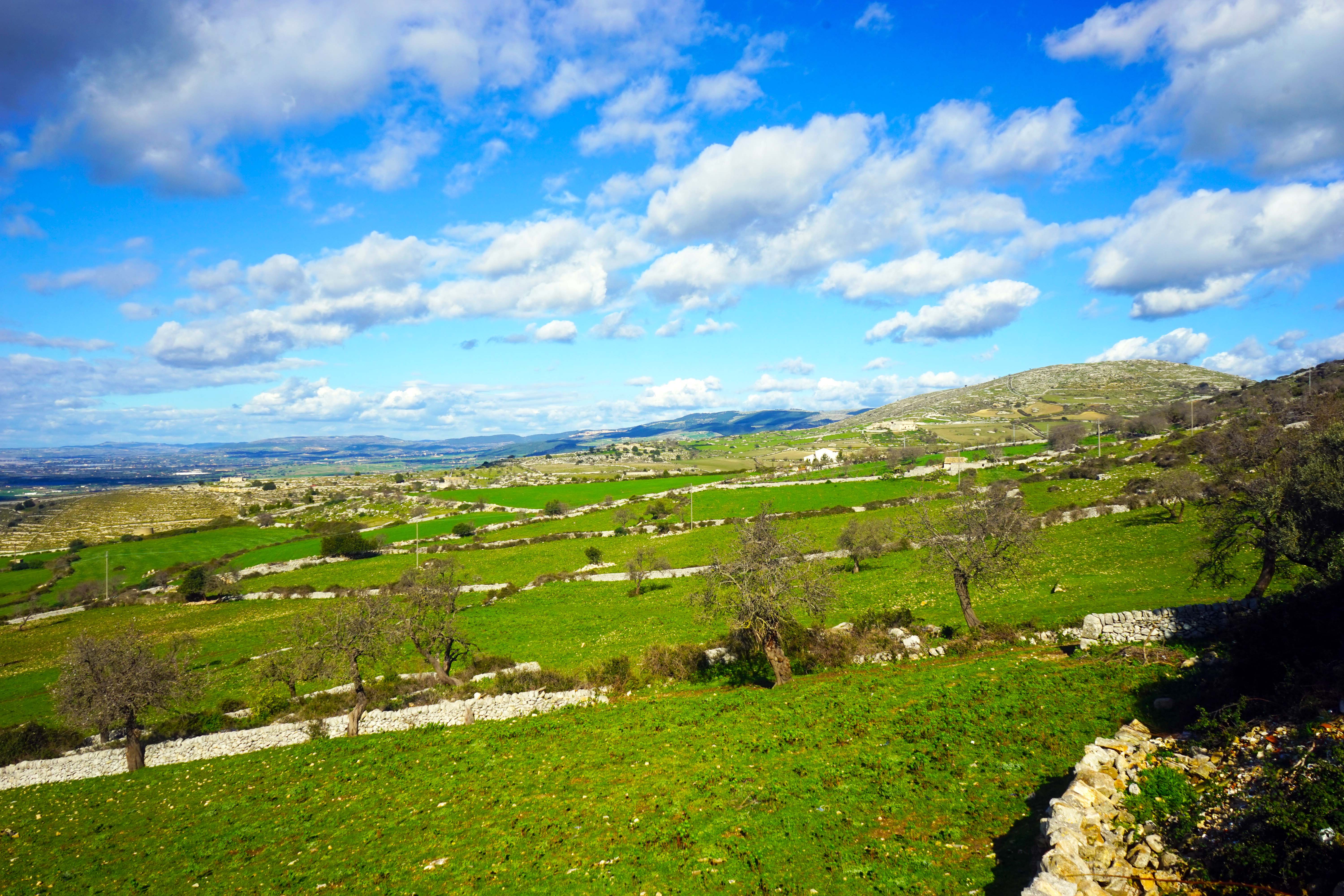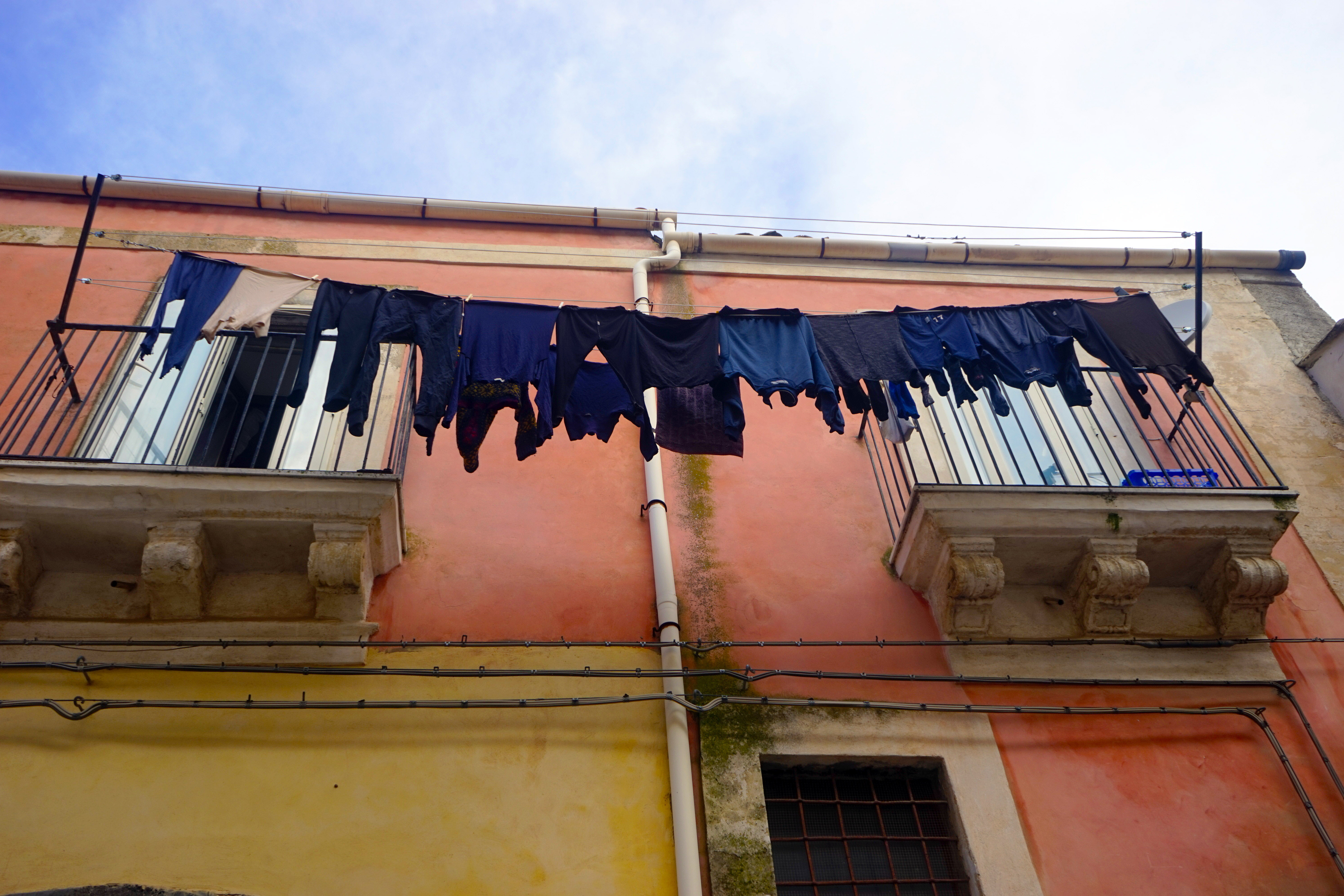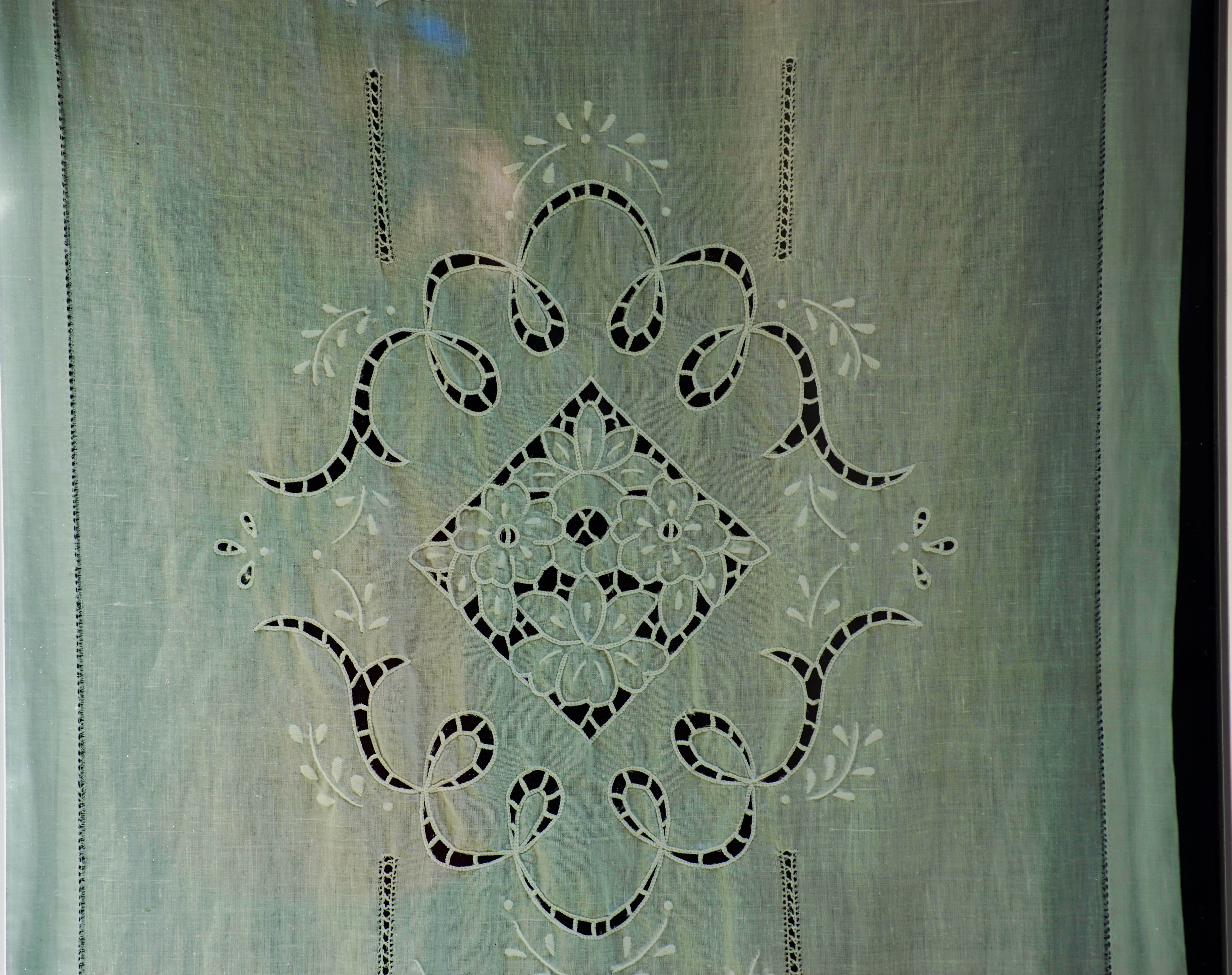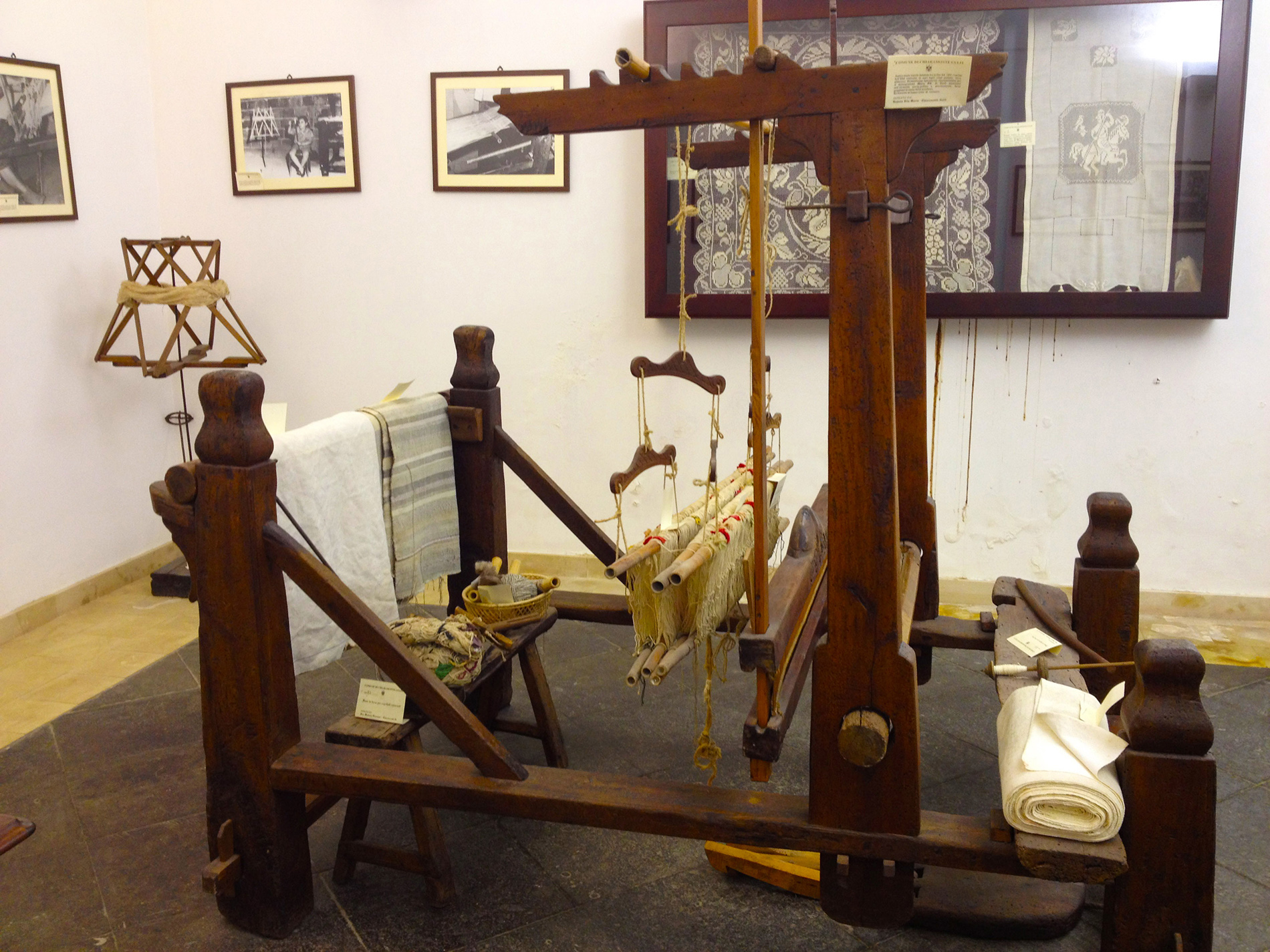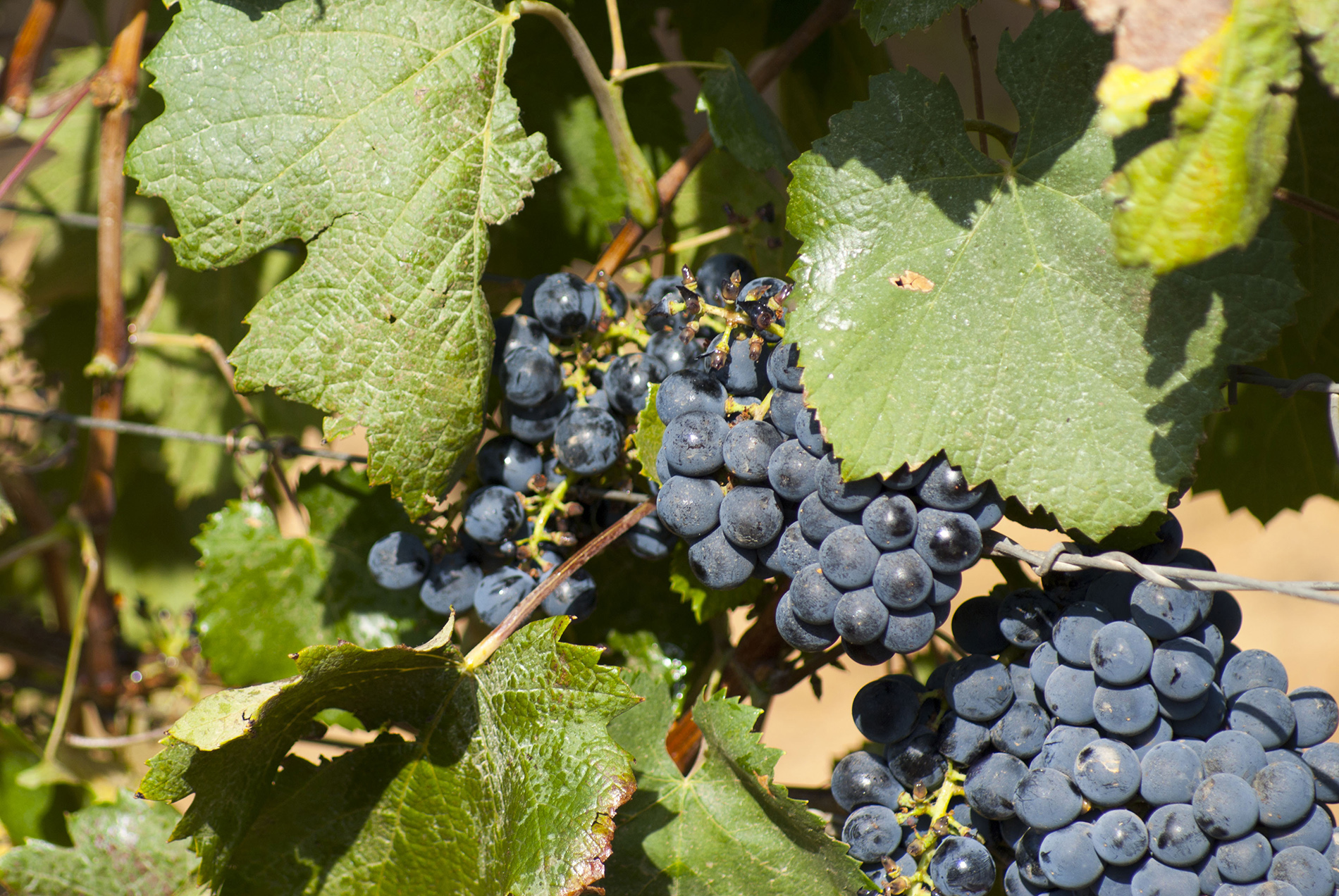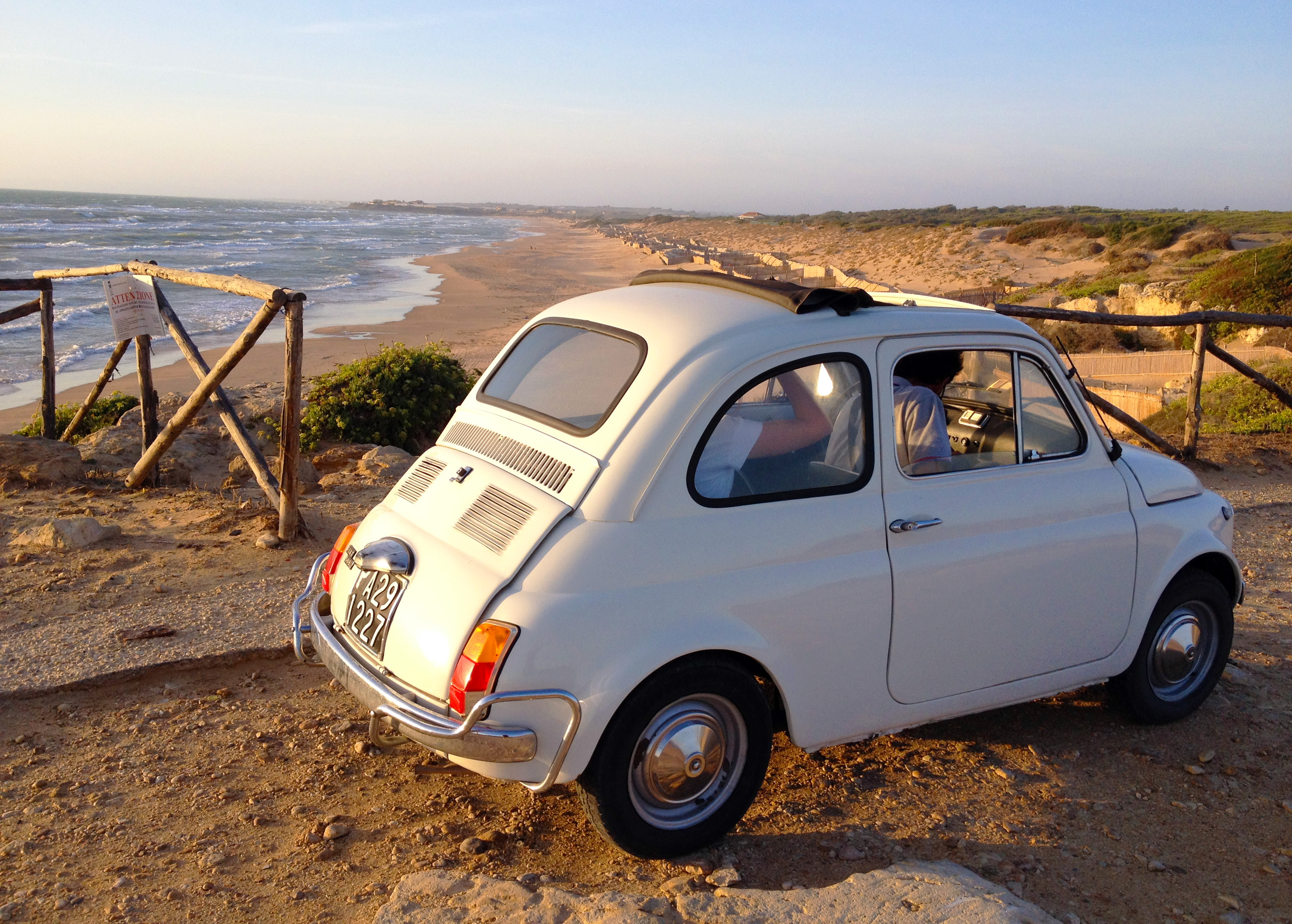Project Description
Food and wine Tour – Ragusa Area
Weekly
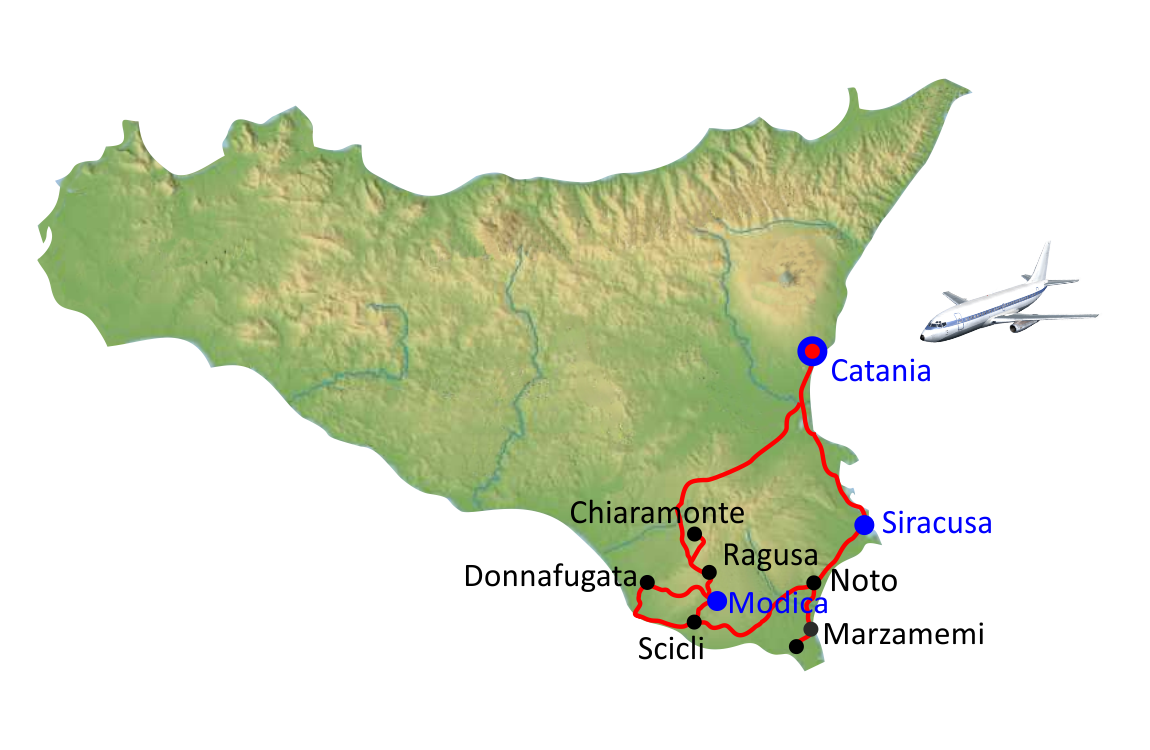
- Arrival in Catania
- Drive to Siracusa, walking tour in Ortigia to discover the Jewish quarter and the Mikvet, Fonte Aretusa, the Duomo and temple of Apollo
- Street food experience in the oldest market in Sicily dating back to the Greek time
- Hotel check in
- Afternoon at leisure
- Dinner on your own
Overnight in Siracusa – Boutique hotel
- Drive to Marzamemi fishing village located by the southern most point in Sicily
- Stop in Pachino to visit a private sicilian cart museum
- Enjoy a fish lunch in Marzamemi by the water on your own
- Learn about the local fish tuna raw products and sample them in a local gourmet food showroom
- Continue to Noto to discover the “stone garden”, stroll along the main street and admire its baroque palaces and monuments
- Visit of Palazzo Nicolaci di Villadorata
- Dinner on your own
Overnight in Siracusa – Boutique hotel
- Leave the hotel and drive to Scicli, visit the town
- Later on visit a farmhouse in the area and tasting and smelling of the scents and flavours organicly produced by a local farmer
- Lunch at the organic farmhouse
- Continue to Donnafugata to learn how noble lived here visiting the castle and the intriguing adjoined garden
- Hotel check in
- Dinner on your own
Overnight in Modica – Boutique hotel
- Visit a watermill and get the fresh flowers instantly produced for you by the mill
- Drive along the sandy shores and stop for lunch by one of the local tranquill fishing villages
- Continue to Modica to engage a fascinating local focaccia making with local people
- Enjoy a concert or music event at the local small theatre of Palazzo Donnafugata
- Dinner on your own
Overnight in Modica – Boutique hotel
- Rise up early to visit a local shepherd making fresh ricotta cheese for you
- Ride an old “Cinquecento Fiat car” along a scenic drive between Modica and Ragusa
- Walking tour in Ragusa Ibla to explore a town that looks like a nativity scene
- Light lunch on your own in Ragusa Ibla
- Drive back by Fiat Cinquecento to Modica riding on panoramic roads in Modica on a panoramic driving tour
- Visit a chocolate factory and learn how to make it
- Dinner on your own
Overnight in Modica – Boutique hotel
- Drive to the medieval stone village of Chiaramonte Gulfi and cross millenary olive tree landscape
- Visit the olive oil museum and the web of medieval narrow streets
- Learn from the local how to make laces and embroideries
- Lunch on your own in Chiaramonte Gulfi
- Visit one of the most prestigious wineries in Sicily in the area and sample the labels they produce
- Enjoy a special cooking class followed by dinner prepared with local organic produces
Overnight in Modica – Boutique hotel (suggested Casa Talia or Palazzo Failla)
- Departure from Catania airport
Special features your tour includes:
- 7 Local food experience or interactive moments
- 5 Activities to enjoy authentic Sicily life experiences
- 8 Special places to learn more about local history, art and nature
And if our reasons are not enough…
- Excellent pick if you have been already in Sicily and wish to learn more
- If you you are not totally fond to learn only about art and history
- If you wish to learn about way of living, cuisine and any interactive and local culinary experience
- If you want to enjoy unique experiences using local means of transportation
- If you love food in general and love to learn how to cook well and simply
- If you have Sicilian origins and connections
- If you are not fond of packing and unpacking every day and rather go on daytrips from the same hotel
- If you love small boutique hotels and prefer more intimate and a stay taylored to your needs, away from the crowds of large hotels
- If you want to discover every evening a restaurant at your own leisure and choice
- Focus on a small and specific area rather than spreading on the whole island
- Siracusa – street food experience in the oldest Greek market in Sicily
- Scicli – lunch at organic farmhouse
- Modica – Focaccia making
- Modica – Ricotta cheese making
- Modica – Chocolate demo and sample tasting at the factory
- Modica – taylor made dinner with local organic produces
- Chiaramonte – Local winery sample tasting
- Pachino – Visit a Sicilian cart private museum
- Marzamemi – Fishing village
- Modica – old watermill
- Modica – Cinquecento Fiat car ride
- Scicli – Organic farmhouse scents and flavours smelling experience
- Chiaramonte – learn the old family art of making laces and embroideries
- Ragusa – evening experience at local small opera house
- Siracusa – Duomo in Ortigia, Temple of Apollo, Aretusa spring, Jewish quarter
- Siracusa – Visit of the oldest Mikvet (jewish purification bath) in the Mediterranean
- Noto – Palazzo Nicolaci di Villadorata
- Ragusa – Donnafugata castle and gardens
- Ragusa and Modica – Historical baroque churches and sites
- Chiaramonte – Museum of the olive oil and embroideries and lace museum
Catania is the second largest and populated city in Sicily after Palermo with about 500,000 inhabitants living in the greater metropolitan area; the area includes part of the villages of the southern slopes of Mount Etna.
The city has always been characterized by a tight connection with Mama Etna or a Muntagna (the mountain) or even Idda (she) to describe the good-natured female character which over the centuries and still today has influenced the history, economic and social moments of the city. Catania is said to be resurrected several times due to catastrophic events such as volcanic eruptions and earthquakes that have from time to time marked death and destruction, but also beautiful rebirth, vitality and initiative that still characterize the lifestyle and somehow the mentality and attitude of its inhabitants.
The so close relationship with the volcano has given fertility to fields due to volcanic ash and minerals, but also abundant stones for the construction of roads, monuments, churches and buildings that are the hallmark of the visit of the city and the surrounding area.
Here the history and arts have shaped the city landscape according to the architectural trends of the historical moment. The Baroque style of the reconstruction after the earthquake of 1693 is the latest and most visible sign today thanks to the original architectural innovations and the distinctive black-and-white colours of the local white limestone and lava anywhere evident on monuments.
Catania today is a city that deserves to be explored on foot around piazza Università, Piazza Duomo and especially along Via Etnea, the main street that cuts through the city from South to North. Behind and at the end the background of Etna, always steaming and looking down at the town woith good natured attitude and its round shapes gently sloping down to the Ionian Greek sea.
From here in 729 BC Greek settlers land from faraway lands to found a colony on uneven terrain, hard to coltivate (hence the term Katanè), but which on the other hand ensured a safe harbor, abundance of water and navigable rivers. The first orientation of the Greek city is thus developed from East to West and follows the second most important street axis of Corso Italia.
This town orientation changes because of the events of the earthquake that destroys and washes away the Roman and medieval city; the new seventeenth century city is now rotated of 90 degrees. The Corso Italia today shows a few Liberty building, modern, art nouveau buildings and important squares like the Palace of science, but also controversial modern buildings built in the Eighties 1980s which occupy the gaps left for decades by the bombing in World War II.
During the Roman time Catania is a prosperous and wealthy town. Theaters, Thermae, amphitheatres, aqueducts, circus, gymnasium and a forum made Catania one of the most important in the Roman Mediterranean world. Fragments of these glorious vestiges are still visible in the old town, partly covered by the 17th-century city rebuilt on the lava stone of a catastrophic eruption in 1669 that lasted almost two years and entirely covered the Roman and medieval Catania.
The Byzantine and Arabic period did not leave strong heritage as the the Norman period did. The Normans reinforced the Christianity but also provided the town with the construction of important churches, including the Cathedral dedicated to Saint Agatha, patron saint of the city, a young girl who lived and was martyred during the Roman times. Today on the fifth of February they celebrate one of the most remarkable religious and folkloric festivities in the world for the number of people taking part in the celebrations.
Other natural disasters and the arrival of new rulers marked the history of the city. In 1669 a massive volcanic eruption changes the coastline, where castles, walls and fortifications to defend the sea are built by the Swabians, Angevins, Aragonese and Spanish. Charles the fifth fortifies the city with massive walls, often recycling the stones of ancient Roman monuments or incorporating them into the pre existing.
The time period that goes from the Normans until Sixteen hundred is marked by political and social conflicts among the new rulers and often among the local noble families; they are in eternal conflict to take over the power which will never turn back benefits on the town development.
Among the prominent personalities, Frederick II leaves the town the Ursino Castle in 1232. Today it is an iconic landamark in town, example of extraordinary military architecture, once located on teh shore, today lying in the historic center, surrounded by buildings built on the lava stones of the eruption of 1669.
The earthquake of 1693 produces material devastation and thousands of victims; the day after they are called for the reconstruction the best architects, master artisans, sculptors and stonemasons available in the market to make the city even more beautiful than before. The high life tenor of noble families means consistent economic resources available for the religious corporations well used by the Duke of Camastra in charge of the master plan of the city.
The plan sets up wide streets and squares designed with modern seismic criteria to create gathering places and easy escape routes for the population. The creation of wide streets and squares also has remarkable social aspects; the best buildings, monuments, churches and squares represent the power and authority of the nobles. In those days teh economic, social, political and religious power are always closely related.
Vaccarini, Battaglia, Ittar and Palazzotto are the architects in charge of creating the new town which now shines in its splendid Baroque architecture with large concave and convex shapes that blend in the facades of churches, large balconies, sculptural decoration of mythological figures or putti (young innocent children) on the palaces of Via Garibaldi, Corso Vittorio Emanuele and via Etnea.
These streets today are full of life and show the open and often ironic attitude of the people from Catania who love eating out in the many restaurants and like to spend time in the fish market. The market is next to the meat, cheese and fruit market place and it is one of the most authentic places to discover the essence of the city; The curious travelers have an opportunity for a truly unique experience with locals, getting lost among the smells that chase one to each other and blend fast in a very limited space while the voices of those who want to sell and boast its products sound loudly in background, fruit of an old legacy of Catania and Arabic Sicily.
Its history, the monuments, the sea, the climate and art make it one of the top three destinations to visit during a trip to Sicily. The Greek origins of the city that was the most important of the Sicilian greek world, rivaling and even defeating Athens, are now the richest and most obvious evidence, but the history of the city and its monuments covers every stage of the history of Sicily .
Founded in 733 BC by a group of settlers from Corinth, Syracuse became one of the capitals of the ancient world’s most powerful thanks to its tyrants, military strategies and policies of expansion, right alliances that for a long time will guarantee solidity, economic and cultural prosperity. The town would later on control and influence the whole of Sicily greek world for a long time until its fall under Rome in the second century BC
During a long period of about five centuries the city was provided with temples, aqueducts, unique and impressive military fortifications, natural harbours enriched with commercial and military logistics facilities and above all a high and modern level town organization in the island of Ortigia across the Neapolis (the new town) extension of the first.
These two places become the epicenters of the art and history of Syracuse and the most popular places to visit today necessary for the visitor to understand the city, its “stories” and its “souls.”
The Neapolis houses a Greek theater that is supposed to host up to 20.000 spectators and still in use today. One of the best preserved and extraordinary theater of the ancient greek world in the Mediterranean.
Beside the theatre, stone were extracted to build the temples of the neighboring island of Ortigia or the altar of Hieron, sacrificial altar dedicated to Zeus Eleuterio and one of the largest of the time that is located next to a Roman amphitheater among the largest of the roman empire in Italy.
The quarries of paradise and the Ear of Dionysus testify the intense activity carried out by man, including about 7.000 Athenian slaves here were condemned to hard work contributing to the grandeur of the city of Ortygia, by the monuments built here. Here you can see one of the oldest and most imposing temples of Sicily, the temple of Apollo, dating back to the foundation of the town and adjacent to the agora and the market place still in use today from the Greek times.
A vibrant market of fish, meat, fruits and spices still stimulates curiosity, the smell and sight of curious travelers who want to get lost among the narrow, noisy and ancient alleys of Ortigia.
Besides the Roman remains, Syracuse keeps early Christian, Byzantine, Arab and Jewish heritage. These are among the most remarkable since the jewish community in Syracuse was one of the most numerous in Italy and the Mikvet (purification bath) is the most significant expression because it seems to be the oldest in the Mediterranean dating back to IV century AD
The actual town plan of Ortigia shows the medieval layout of small and narrow streets, full of churches and museums that tell well its glorious Middle Ages through the Palazzo Bellomo, among the most important museums for medieval arts in Sicily.
The baroque architecture, following the disastrous earthquake of 1693 and its beautiful seventeeenth century aristocratic palaces coexist with spaces and fragments of his past greek and medieval even today along the coastal perimeter with the Maniace Castle.
The best blend is definitely represented in the central square, once the acropolis of the Greek city and today a place of summary of all the historical events of Syracuse in the temple of Athena, now incorporated in the beautiful baroque Cathedral of Ortigia showing the “stories” and “souls” of the city.
A Greek temple turned into a Christian church, decorated by Byzantine workers, then used as a mosque, and reported to the Christian framework by raising the ceiling portion and opening windows during the Normans.
The seismic events determine a rotation of the temple, the entrance and orientation towards the new square and enrichment with chapels, statues, a baroque altar and especially a spectacular façade stands where Saint Lucia, patron saint of the city writes the latest pages of a wonderful stone book of the history of Syracuse and the whole of Sicily.
Among the many stories that the city tells us there are those of its Patron Saint Lucia and Caravaggio who stayed here briefly and left the city the burial of Saint Lucia that today you can ‘see on display in Syracuse not far from one of the symbols the city that is the spring of Arethusa.
Here we celebrate fresh and salt water of the sea that discloses to us the myth of Arethusa and Alpheus under the shade of papyrus that grows here since ancient times and whose paper is also a resource for economic and craft activities in town.
Noto is an hidden gem of the baroque architecture in Seventeen hundred in Sicily.
The town was reconstructed in a new site after the earthquake in 1693 and it was conceived following modern anti seismic cryterias.
The best architects and carving masters were called to plan the new town and unlimited economic resources were available thanks to the noble families and the religious confraternities especially during the Spanish domination; here they developed consistently their activities where Arab and Jewish communities had proactively operated in the past; these two communities and the Cristians lived in prosperity and shared a vast and fertile territory, still today the biggest town territory in Sicily.
The foundation of a new town provided of wide streets and large squares and its churches and palaces follows the social needs of Seventeen hundred society.
The main street, Corso Vittorio Emanuele and the Cathedral square, shared with Palazzo Ducezio (City hall today) become the places of the social life and symbols of the religious or civil authority.
Noto Antica is the the starting point to understand the history of the town from the Sikelians, Greeks, Roman and above all Arabic dominations. The Arabs divided Sicily into three big districts, whose Noto was county town of the South East.
Noto antica was abandoned and today it is vey interesting to walk across city gates, bastions, palaces and churches to understand the tragedy of an earthquake that a surviving historian of those days compared in length to a Crete prayer during the catholic mass.
The new seventeen hundred town has plenty of churches and adjoined massive monasteries among which Santa Chiara, San Salvatore, San Francesco facing the main street.
Palazzo Ducezio and the Cathedral look opposite at each other amongst the scenographic steps of the square surrounded by stone gardens of the decorations from the curches having religious theme or apotropaic inspiration along the scary stone faces of the balconies on the nearby streets.
Palazzo Nicolaci is a beautiful example of Sicilian baroque style; its extraordinary mascherones are wonderful to look from bottom up to the top standing in the street, while in the past they meant power, authority and somehow social fear looking up at them.
Rampling lions, Horses, dreadful or peaceful puffy faces, marine syrens with the breast uncovered, scary figures with teeth out have been waiting visitors to fascinate and magnetize under the orange vivid colour that the stone gets at sunset time, as well as all the other momuments in Noto.
The town is really elagant today and visitors are increasing in number every year probably thanks to the vicinity to its Marina, Siracusa and other towns on the coast (Marzamemi and Vendicari), pretty well linked by the new motorway. Its economic activities, once based on farming and wine production are today are slowly decreasing and almost balancing in importance to tourism.
The origins of the area of Ragusa are quite ancient and its territory has been inhabited since 23.000 years ago as witnessed by important prehistoric caves.
The diversity of the landscape, mountanious, hilly and flat as far as the shallow sandy shores on the coast show the various productive farming activities. Greenhouses coltivation on the flat lands, olive and vineyards on the hilly slopes, cheese and dairy or unusual coltivation such as the carob trees.
The main cities or small towns are mainly located along the gentle slopes or stiched on the rugged canyons; they are crossed by rivers, once upon a time waterways like a modern motorway, leading towards the interior or the open sea. This waterways mean also abundant availability of fresh waters which are well suitable to economic activities and human development.
The territory has been inhabited since the prehistoric times, then by the Sikelians, Greeks and Romans, that unlikely the previous settlers, live along the coast and develope trade roads which link the plateau to the coast and its new military and economic strategic sites.
Byzantine and Arabs introduce new coltivations and organize the flat areas introducing new coltivation and irrigation tecniques, farming compounds and organize the hilly territory in cultivated terraces; other people from the north, the Normans and the Swabians reinforce the power of the Cristianity on the territory building churches dedicated and based on the cult of Saint George. These architectural religious traces will develope consistently and long lasting through the construction of imposing Baroque churches.
The middle age is charachterized by noble families of Norman origins (the Chiaramonte) and neogothic artistic experiences which get inspiration from the Spanish heritage of the new rulers.
The County of Modica becomes “a reign in the reign” in Sicily and very often the the religious power is strictly connected to the economic and social prestige which finances the grandiose churches, noble palaces, convents which represent authority, social rank, power well underlined by the architecture.
The catastrophic event of 1693 deletes any medieval trace; the reconstruction shows the stubborness and rebirth of the old noble classes challenged by the dilemma of building the new town on the same site or choose a new one; a new social class, farmers and new business men called “massari”, breaks into the new political and social classes establishment operating brave and new choices, sometimes in contrast with the aristocracy not moving forward.
The hilly territory changes aspect thanks to the dry stone walls. Now, in Fifteen hundred, nobility gives his lands in concession for a very long term. Now families of farmers so called “Massari” can clean up, plow and make possible to coltivate abandoned lands and produce wheat, grain, flowers in surplus and over production. This helps to develope welfare and economic prosperity which closes up an economic productive circle which enrich consistently a new middle class which will become the main competitor to the old aristocracy not moving forward.
Between eight and nine hundred the towns change. Theatre, squares and wide streets conceived as an escape route after the 1693 earthquake become places which well represent the new ruling classes; new changes on the territory are introduced by the innovative and high productive coltivation in greenhouses, the development of the wine production and the exploitation of new mineral resources in the fifties like the oil which comes right after the asphalt stone, largely exported in Italy and overseas too.
Tourism has reached the area not long time ago. The main economic activities are farming and wine production, while the baroque city scapes, the hills and its dry stone walls attract and charme the tourist that gets here not accidentally along the way to a big city like Palermo or Catania, but choosed on purpose to get here.
Here you will drive slow along hilly roads, you will eat vegetables, cheese, bread, olive oil and wine; their excellent taste will bring you back in the past times, but the most important ingredient will be the sense of hospitality of the people as good and genuine as the products of mother earth here…
The town has more than 3000 years of history. The three hills and the lower part with two rivers were a good place to live since the prehistoric times; later on the Sikelians lived here, finding shelter in the many caves on the hill.
Greek, Romans, Byzantine and Arabs left important trace. With the Byzantyne it was an important stronghold, while the Arabs slightly changed the old greek name Motyca into Mohac and the hilly territory around organized in sloping cultivated terraces.
After the Arab time, Normans, Angevins and Jews made this place an important trade route and commerce was quite flourishing.
Modica had one of the largest and most vital Jewish communities in Sicily at that time.
The Chiaramonte family started in 1300 the golden era of the County of Modica. After the Chiaramonte, another family, the Henriquez – Cabrera ruled here; the dinasty had Spanish origins and run the power for a long time, until 1700.
During this period, the county of Modica and the family had a huge prestige and power throughout Sicily since they could mint coin and the territory was extended as far as the outskirts of Palermo. The prosperity of the town was expressed by beautiful churches like San Giorgio and Saint Peter as well as monasteries and convents financed by the noble families. The sisma in 1693 destroyed the town and the medieval traces. Only a tower of the “Castello dei Conti” remained of a massive complex of wall surrounding the central hill of the town.
A new impulse was given to the town that had a fast economic rebirth with the building of beautiful Palaces in Liberty style and the theatre along the main street.
In 1900 Modica was a vibrant town and the good quality of the food and culinary tradition inspired the local people to rediscover the ancient recipies of the chocolate dating back to the Spanyards.
Chocolate is today an important resource which attracts tourists ready to go for a tasting of the red pepper spicy chocolate or the many other flavours which the local creativity has developed.
The Duomo of San Giorgio is one of the best examples of baroque churches in Sicily, since it is located on top of 250 steps on a hill.
Saint Peter and Santa Maria di Betlemme are other churches, a bit lower located and will certainly surprise you with their interesting hidden gems.
Today Modica lives of farming; tourism has been developing well in the last twenty years, especially after the town and its monuments were listed as Unesco site.
Scicli is a medium size town with about 30.000 inhabitants. The town is located on ancient river beds and sits on a flat area encompassed by three valley which converge into the geographical and historical city center today.
The name probably comes from the population of Siculi which lived in this area of caves and settlements dating back from the bronze age through the byzantine and medieval age.
The contacts with the Greek were occasional, while significant are the traces left by the Carthaginians, Roman and Byzantine; the Arabs left the most remarkable influence on the territory organizing the farming activities around the vast and fertile countryside around and making the town prosperous thanks to the commerce.
The Normans engaged here a harsh battle against the Arabs and still today the event is celebrated through the feast of Madonna delle Milizie who appeared on a white horse and defeated the infidels.
Swebians, Angevins, Aragonese and the County of Modica mark the historical chapters of the town till the big earthquake of 1669; the sisma gave impulse to rebuilt churches, convents, noble palaces and a town layout among one of the most elegant of the Baroque treasures of the area.
The upper part of the town, Saint Mathew hill, deserves a nice walk to enjoy lovely views from the top and see castles, fortifications and the visit of the deconsecrated church of Saint Mathew itself.
If you want to climb the hill you will walk along the way by “Palazzo Beneventano”; the palace has some of the most beautiful and unusual scary carved human heads with their tongue out which intimidate the traveller watching from the ground to the top. The figures are mounted by a crown, coat of army of Beneventano family, which today is represented also in the city flag.
The civil and religious building, palaces and churches, stand along a three branched itinerary where squares and main streets have the nicest baroque art pearls in town.
Along via Mormino Penna you will see remarkable churches, prestigious palaces and the city hall, often the set of Tv fiction Inspector Montalbano, whose police headquarter is inside the building; San Bartolomeo church and other noble palaces (Fava and Mormino Penna) are other art wonders not to be missed too.
Today the town lives of agriculture and tourism, thanks also to the nice sandy beaches and shallow water a few miles away.
Donnafugata Castle is located in the countryside in a place surrounded by dry stone walls and millenary carob trees halfway between the sea and Ragusa on the Iblei plateaus. The first construction dates back to the 14th century and the name derives from the Arabic words source of health or from the legend of Donna Countess of Navarre long chased by a very in love and pushy count. Here she found find shelter as she was escaping (donna fugata).
The castle was then expanded, furnished and decorated with taste of Catalan-Gothic architecture of the late eighteenth century thanks to the rich nobleman Baron Corrado Arezzo. Next to the castle there is a huge park with a labyrinth, fountains, trees that had the aim to surprise and entertain guests in those days.
Chiaramonte Gulfi is a small town, south east of Sicily, not faraway from Ragusa and located at one the highest points of Monti Iblei. From Here you can enjoy beautiful views as far as Mt Etna to the north and down to south west all along the plain of Gela and all the way to the Southern coast close to Agrigento area.
The landscape overlooking those area has millenary olive trees and vineyards as well as dry stone walls where flocking sheeps produce supreme quality ricotta cheese and other milk produces.
The territory, rich of water, has been inhabited from the iron age, but settlements date back and go through the Roman, Byzantine and medieval time. The name comes from the Chiaramonte family.
They were one of the most powerful noble family in 1300; one of the family members, Manfredi Chiaramonte, moved the town of Gulfi, sieged by the Angevins, on a higher and safer place giving the name of his own family.
A castle and walls were built to defend the town and one of the gates of the castle is today a main historical iconic landmark in town.
The town was destroyed by the 1693 earthquake and rebuilt on the same site following new artistic and architectural inspirations and ideas.
Today the town lives of farming activities which are developed in the countryside characterized by sloping terraces enclosed by dry stone walls. The “masseria” was the epicenter of the farming and social activities in the past where olive oil and wine, flowers and cheese, were storaged and worked.
The masseria is a complex of adjoined rural houses around a big courtyard, normally having a cistern and a dwell in the center, where all the daily or seasonal activities were done.
Today Chiaramonte, together with its peculiar territory, is the perfect place for travellers that want to enjoy interactive activities with the local people to learn about a unique lifestyle run with genuinity.
The town has little cobble stone alleywas where the local ladies still prepare their embroideries sitting just outside the house they reproducing timeless activities dating back to the ancient time…
- Private Sedan car or Mercedes Viano up to seven seats
- Private driver speaking your language
- Fuel, motorway toll and parking fee
- Half day service with private driver and car UP TO 4 HOURS
- Full day service with private car and driver UP TO 8 HOURS
- Water bottle onboard
- Visits, stops and panoramic driving tours described on the itinerary
NOT INCLUDED:
- Archeological sites, monuments and churches entrance fees
- Local products and wine tasting or culinary experiences unless included
- Driver and local guides gratuities (we suggest 10% if services meets or exceeds your expectations)
- Local Sicilian regional licensed guide
- Meals, wine tasting or culinary experiences if not already included in the itinerary
- Yachts, helicopter or private plane rental linked to our ground transportation service
–
or send us a message requesting information, our team will respond as soon as possible.

